When it comes to positioning our products, we have to acknowledge they don’t exist in a vacuum. We’re always competing in a crowded marketplace, no matter how niche we might think our offering is.
In this article, I’ll explain three of the main competitors; the hordes, the giant, and the ghost, and walk you through how to position your products or services for maximum impact, with examples from my experiences not only competing but winning.
My name's April, I spent 25 years of my career working as a head of marketing or a head of product at a series of seven successful startups. Six of those startups ended up being acquired so through the course of acquisition, I ended up at five big global companies.
The reason that's five, not six, is because I had IBM twice. Across that launching products in the market became a specialty of mine. Across all the big companies and the startups, I launched maybe 16 products into the market.
In the last four or five years, I've switched to being a consultant, and specifically, my specialization is positioning. I work mainly with tech companies, mainly with tech startups, helping them really get clear on who loves their stuff and why.
Positioning against competitors in the market
For this article, I thought what I would talk about is positioning but particularly within the context of how do you position yourself against competitors in the market? If we think about it, our products don't exist in a vacuum.

They exist within the context of different alternatives, alternative ways of doing the thing that our product does. Interestingly, we bump into different kinds of alternatives at different places in the buyer journey. You can think of it a bit like this.
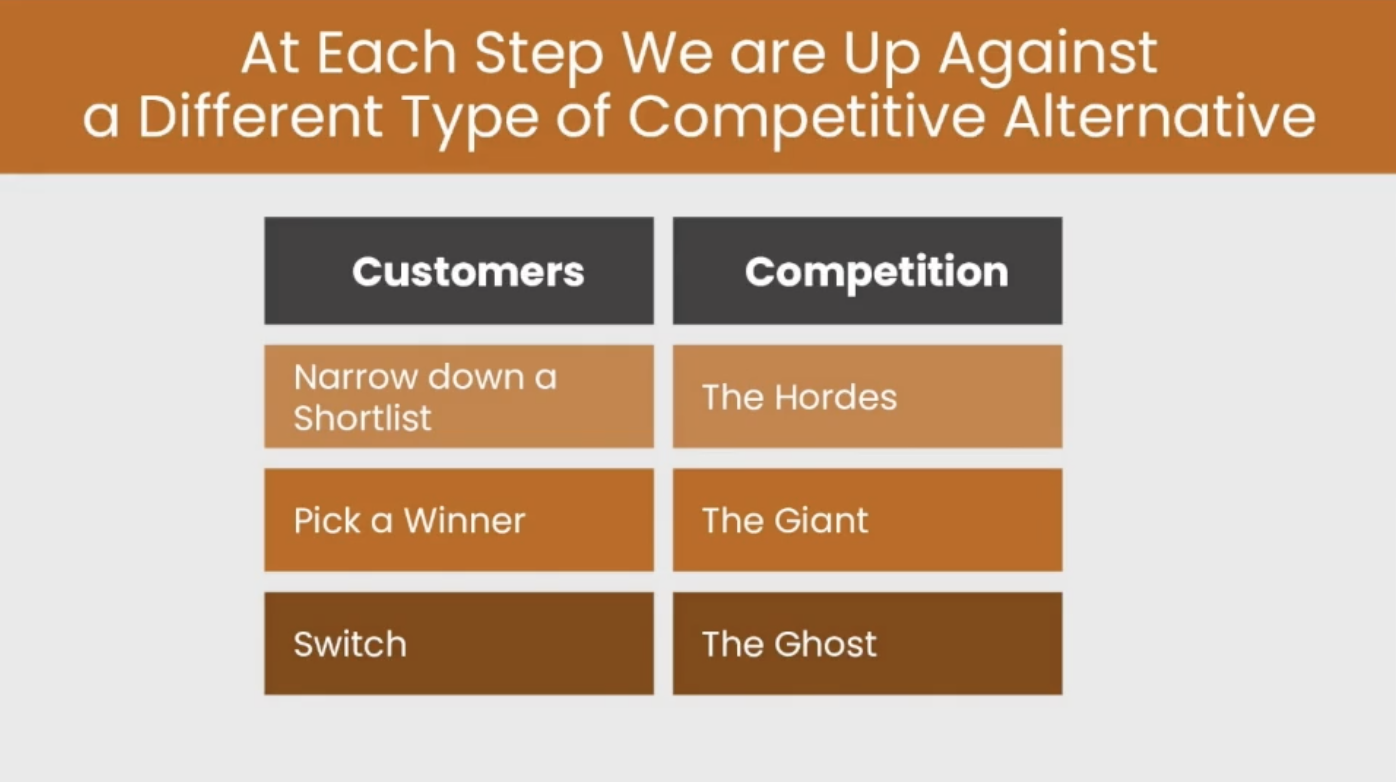
How to narrow down a shortlist: the hordes
In a typical course of buying a product first, there's the challenge for customers of how do you narrow down the options? There are all these other people that do things that look like what I do, how do I make sure that I get on a shortlist?
At that stage, you're fighting against the hordes.
Pick a winner: the giant
The next competitor you've got to worry about when a company makes a shortlist, generally, there's a big competitor floating around. Sometimes the big competitor isn't directly competing with what you do, but you'll get companies say, "Do I really need purpose-built software for this, maybe I can do it with my accounting package, maybe I can do it with my ERP package."
In those cases, you're fighting against the giant.
Switch: the ghost
Lastly, we have the issue of even when we have managed to beat the hordes and we made it onto the shortlist, even when the customer has decided to go with us, we still have this issue of in order for customers to buy our stuff and adopt our stuff we need to fight against the status quo or the ghost. Which is the competitor that you cannot even see.
I'll talk a little bit about each of those and how you use positioning to battle against each of these types of competitors. The first one is the hordes.
The hordes
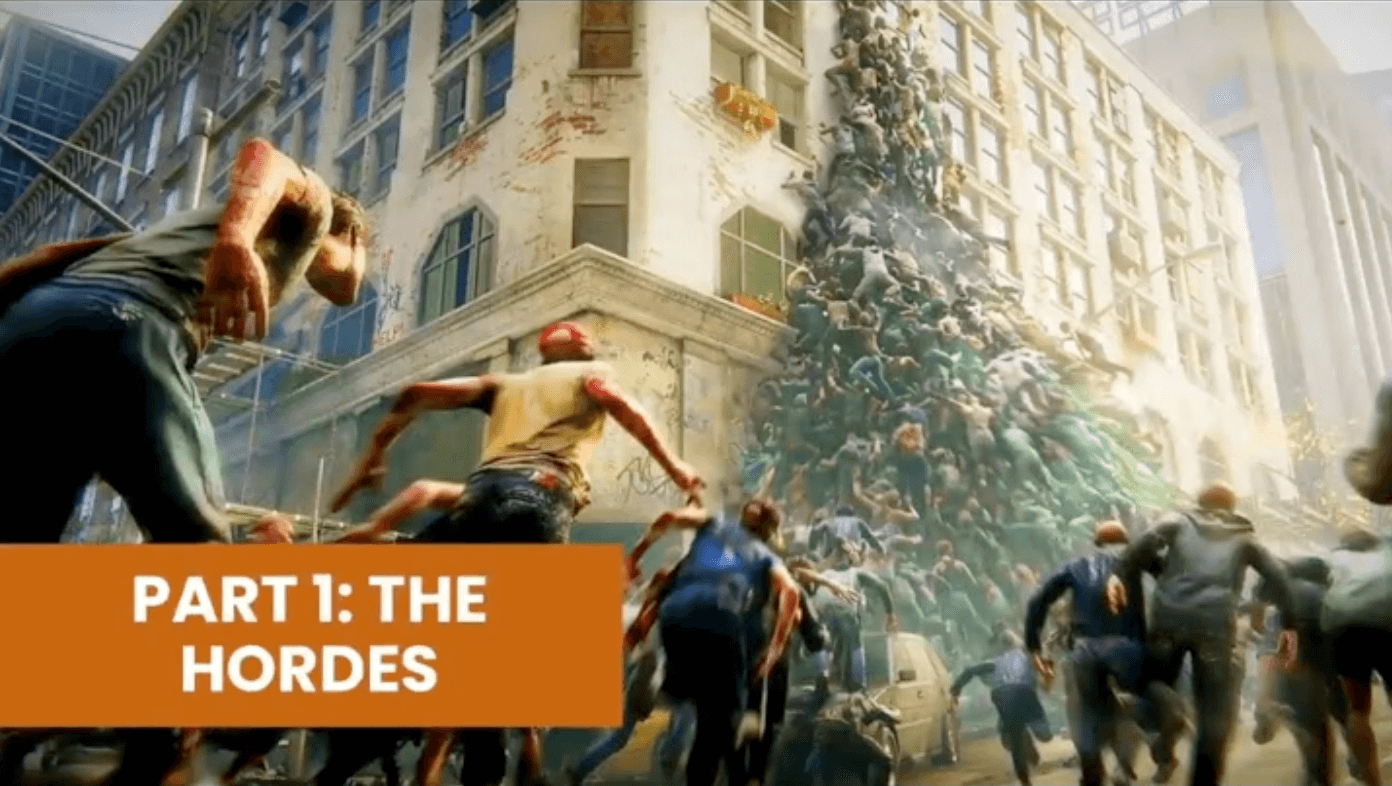
As I said before, we've got competition, lots of competition as marketers, you've probably seen this image before, this is the marketing technology landscape.
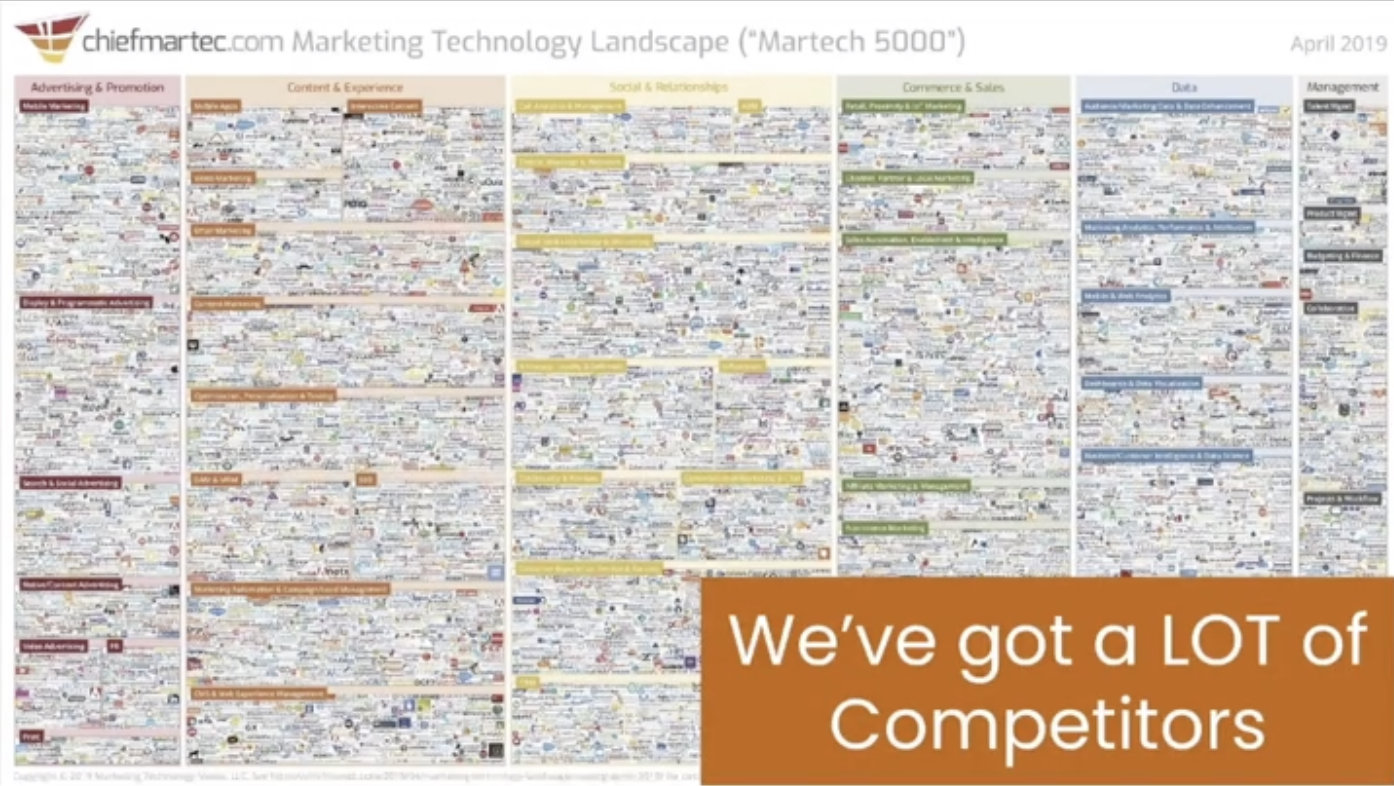
This is just one tiny corner of the software universe. It's horrifying, look at it. There are 7000 products in there. How does that customer ever narrow down a shortlist when the market looks like this?
Sometimes people come to me and say, "Well, you know April, that's martech, that's a crowded space. Other spaces aren't that crowded". That's actually not true.
Here's sales technology.
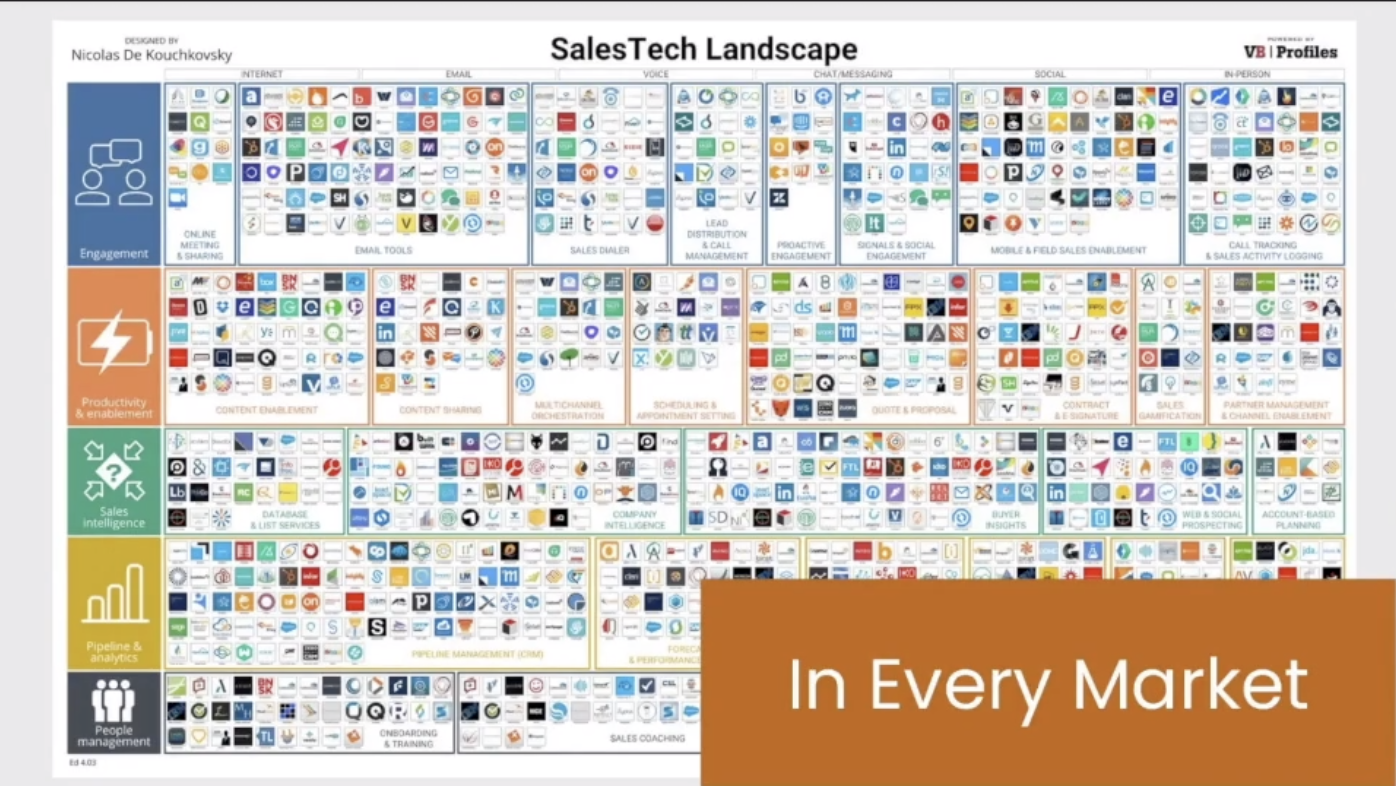
Here's data and AI.
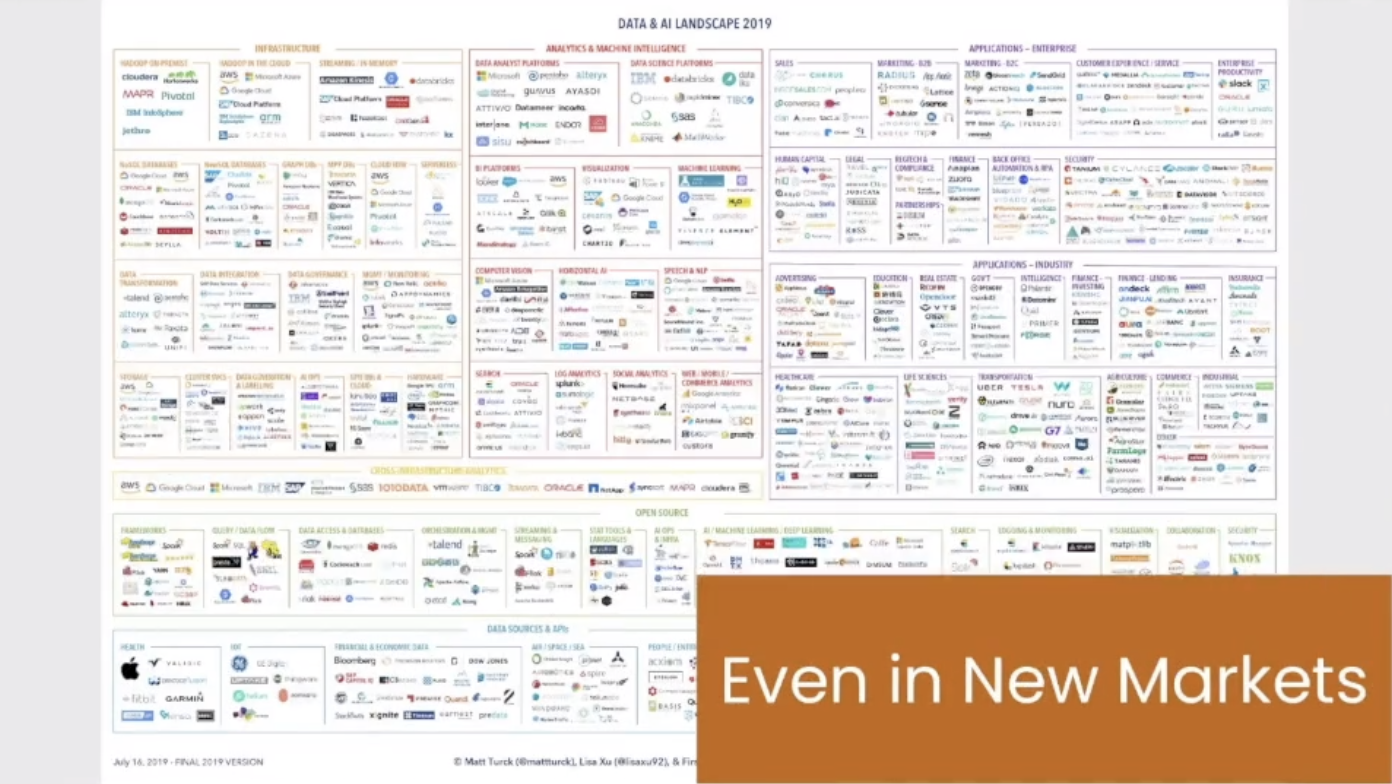
Once I was speaking at a conference and a guy came up to me afterward, and he said, "You know April, my market isn't actually all that crowded. I'm in the drone technology market". I was like, "Oh, I bet I could find one of these slides". Sure enough, there it is, the drone market.
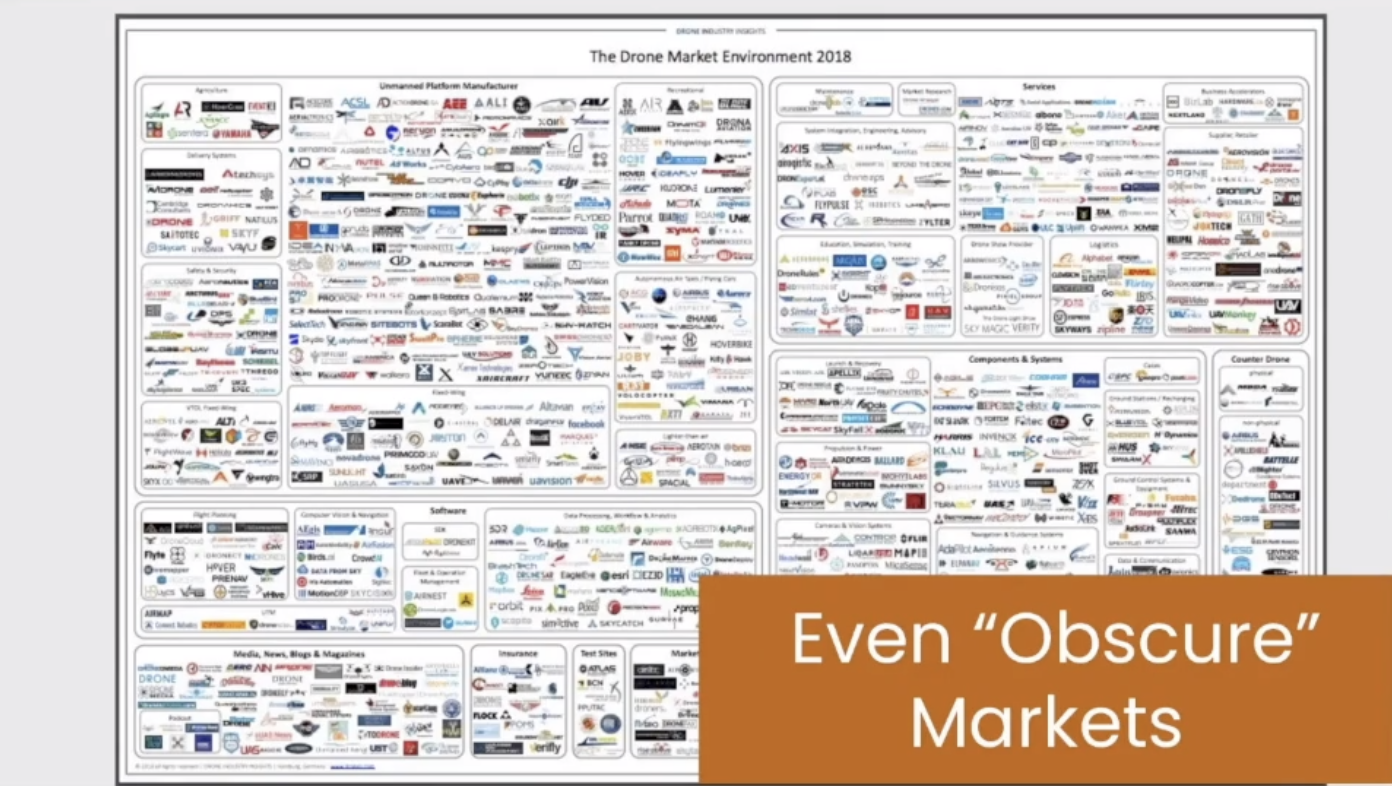
It's crowded too.
How do we actually make sure that customers can understand what we do and we stand out from all the other ones there? The first way I think we do this is we make sure that we're only fighting where we can win.
Only fight where you can win
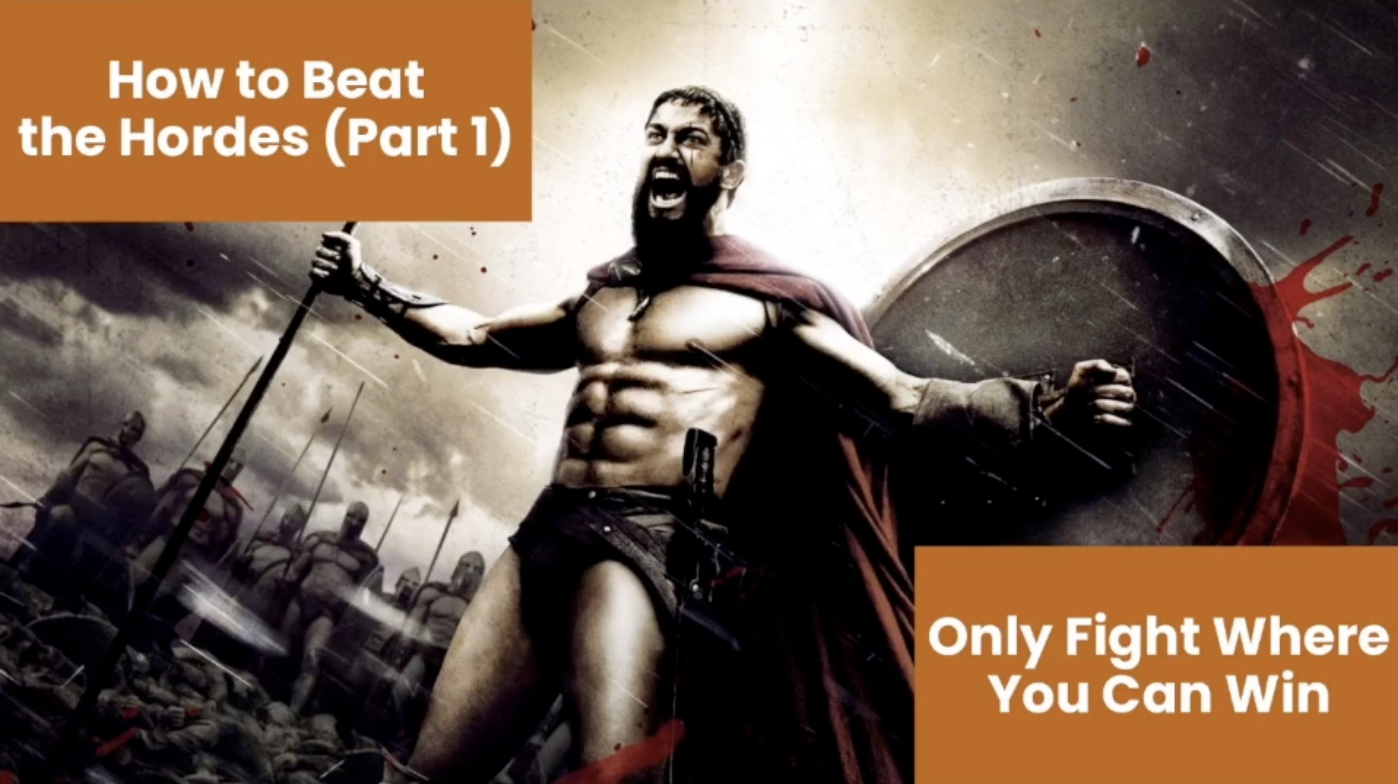
Now that might sound obvious, but I like this quote from Warren Buffett where he says, 'how do you beat Bobby Fischer? You play him at any game but chess', a lot of us are essentially trying to play chess against the chess grandmaster, we are unintentionally positioned in a fight that we literally cannot win.
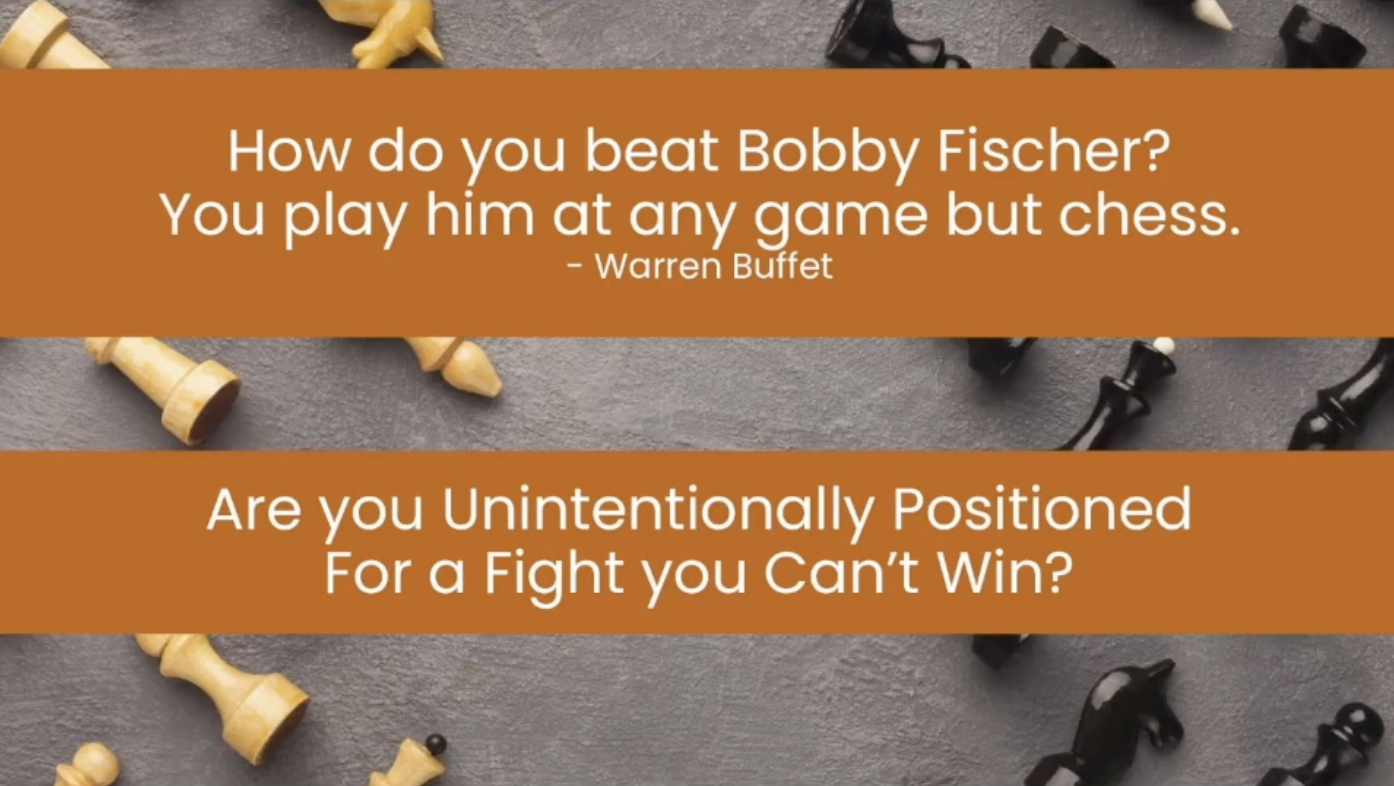
I'm going to give you two examples of this. The first example is kind of goofy and stupid, and it doesn't have anything to do with tech. Then I'm going to give you the second example, which is a tech example. But the first one is good, just for illustration.
Example 1: Cake innovation
Let's say for a minute we don't work in tech, I'm a baker, my jam is chocolate cake. I'm really, really good at chocolate cake.
I wake up one morning, and I say, 'this morning, I'm going to innovate the heck out of chocolate cake'. I come up with this idea specifically, what if we had a chocolate cake that was more like a snack then dessert, and specifically, it could be portable, so I could walk down the street and I can drink coffee in one hand and have my chocolate cake snack in the other hand?
I come up with this product, and I iterate on it, I get it into customers’ hands. Eventually what I come up with is this thing on this image over here on the right-hand side.
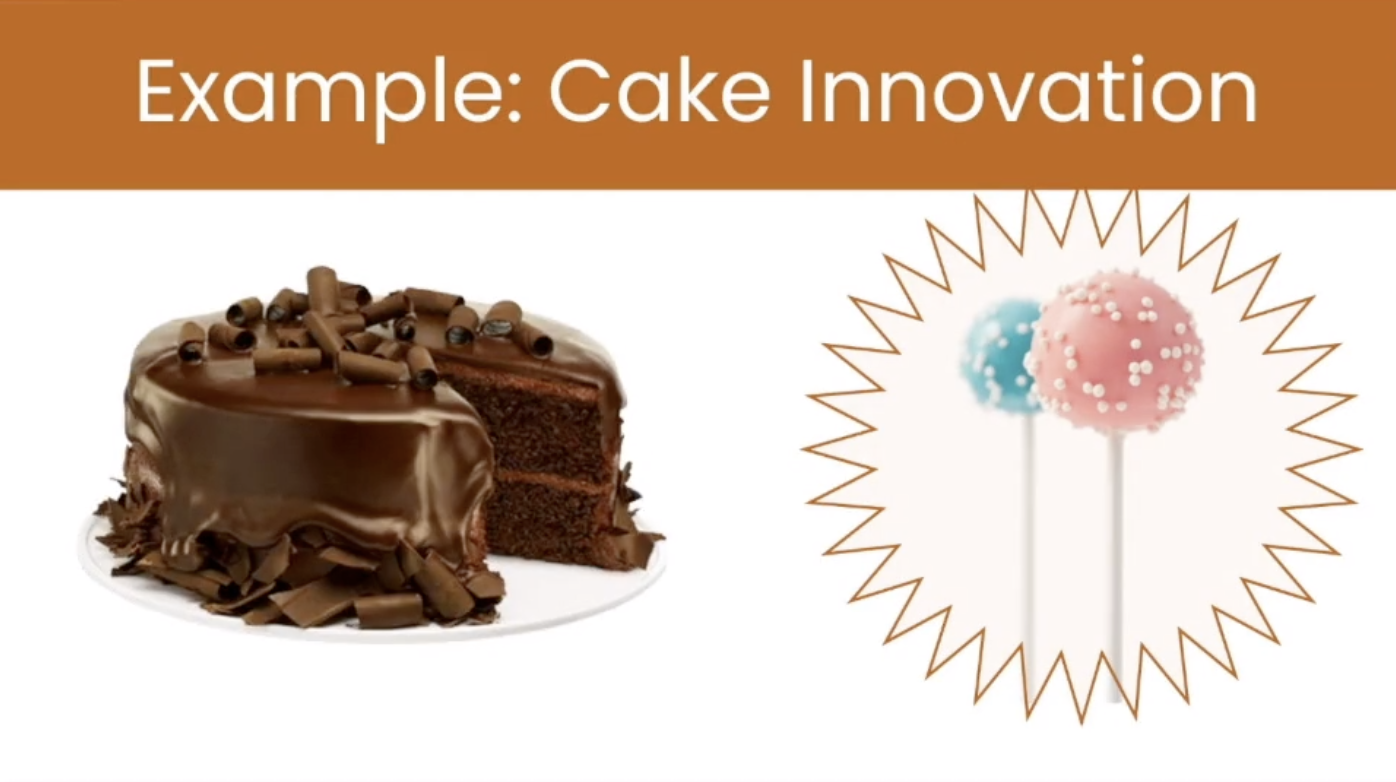
I've got this thing and customers love it. They're crazy for it. I don't know what I'm going to call it yet but they love this thing. I decide, well, I'm ready to take this thing primetime now I'm going to call the head of buying at Starbucks and I'm gonna sell her on my innovative chocolate cakey thing.
The pitch
I call her up and here's how I pitch it:
"Hey Starbucks lady, I got this amazing thing. It's amazing. You know what it is, it's cake. But it's not just any kind of cake. It's innovative cake. It's innovative new cake.
"What I did was I took the cake, and I made it a little bit smaller, kind of like a morsel of cake. Then I decided I was going to give it a handle, more like a stick. Then I got this amazing new innovative next-generation cake on a stick thing".
Do you think that pitch works with the lady at Starbucks? No, it doesn't. Why doesn't it? Because the Starbucks lady is going to be like, "That's not cake. That's Franken cake. That's cake doing stuff cake was not meant to do".

What went wrong?
Why does she think that? Because right out of the bat, you positioned it as cake. What wins a cake contest? The cakiest cake in town that's what and how do I evaluate cake? Well, I evaluate cake-like cake. I want a big piece. I don't want your tiny little piece. I want a great big piece. I want frosting - that is a key component of cake. You never even mentioned frosting, you got this pink stuff and sprinkles. Why is there a stick there? Sticks do not belong on cake, cake and stick that does not go together.
You set yourself up to fail. Because you've positioned yourself against the thing that you cannot build, you cannot be. What is innovative, new, and amazing about the thing that you invented? It's the ball, and the stick, and the sprinkles, and the crazy colors. All of that stuff is fundamentally not cake.
Positioning in a category determines how you get evaluated. If you do a bad job of it, you're going to get evaluated in a way that maybe you don't look so good.
How to fix it
In this case, I could have positioned this in a completely different way. I could have said”
"You know what Starbucks lady? I've got to pitch you on this thing. I was thinking about what if we had a lollipop, except it's a lollipop for grownups at the coffee shop. What we did was we took this lollipop and we made it out of cake".
Now that's different. I'm not expecting frosting on the lollipop, does the stick and the ball and everything make sense? Of course, it's got a stick and a ball and everything else it's a frickin lollipop. That's what we know about lollipops.
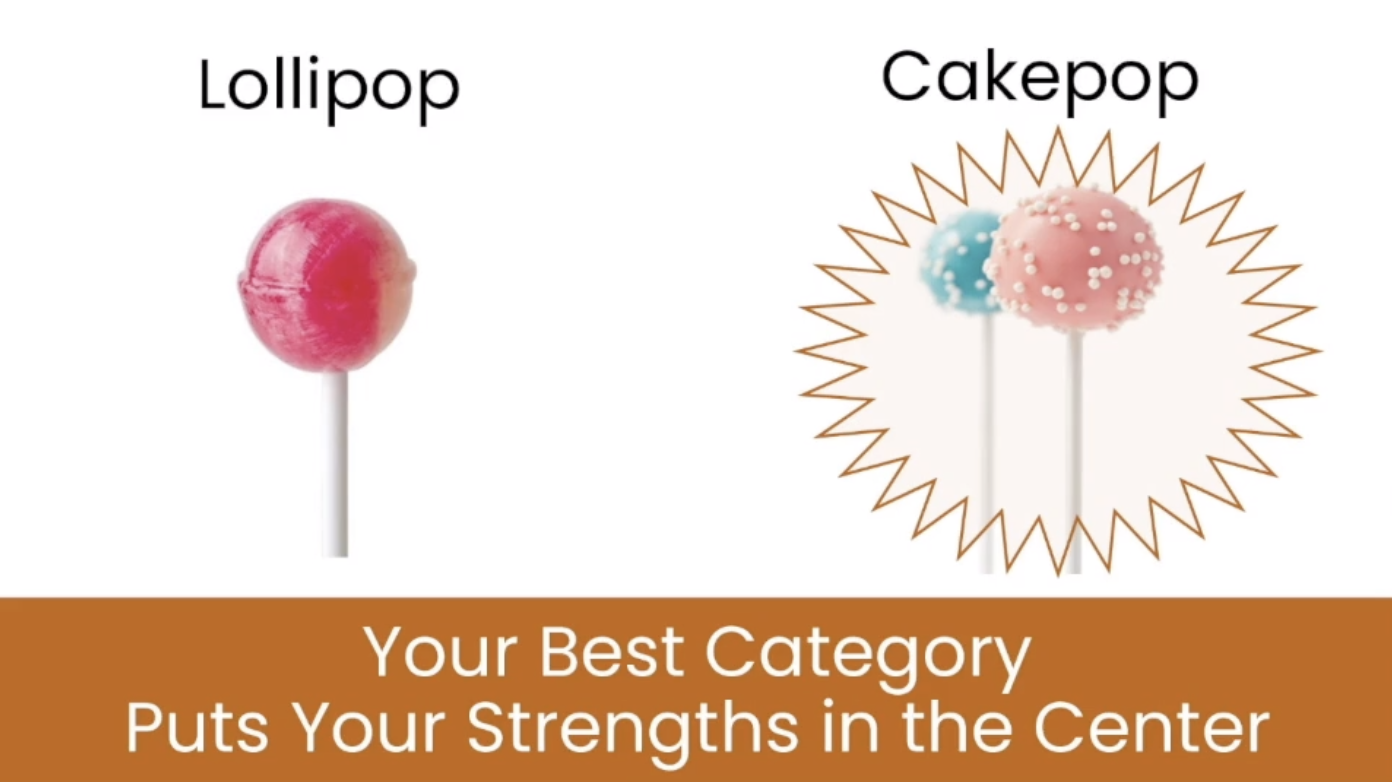
If what I'm looking for is a lollipop for grown-ups at the coffee shop, Cakepop wins. My best market category takes my strings and puts them right at the center of what my product is all about.
Example 2: Robots
Now, let me give you a tech example for this. This is a company in Canada, they're called Clearpath Robotics, founded by a couple of guys with advanced degrees in Mechatronics Engineering, they start a company, they’re robot guys, they're building robots.
Specifically what they build is a robot that drives around a manufacturing plant and delivers things from one place to another. Now, if you're like me, you don't know too much about robotics, you might think, well that doesn't sound like a very hard problem to solve.
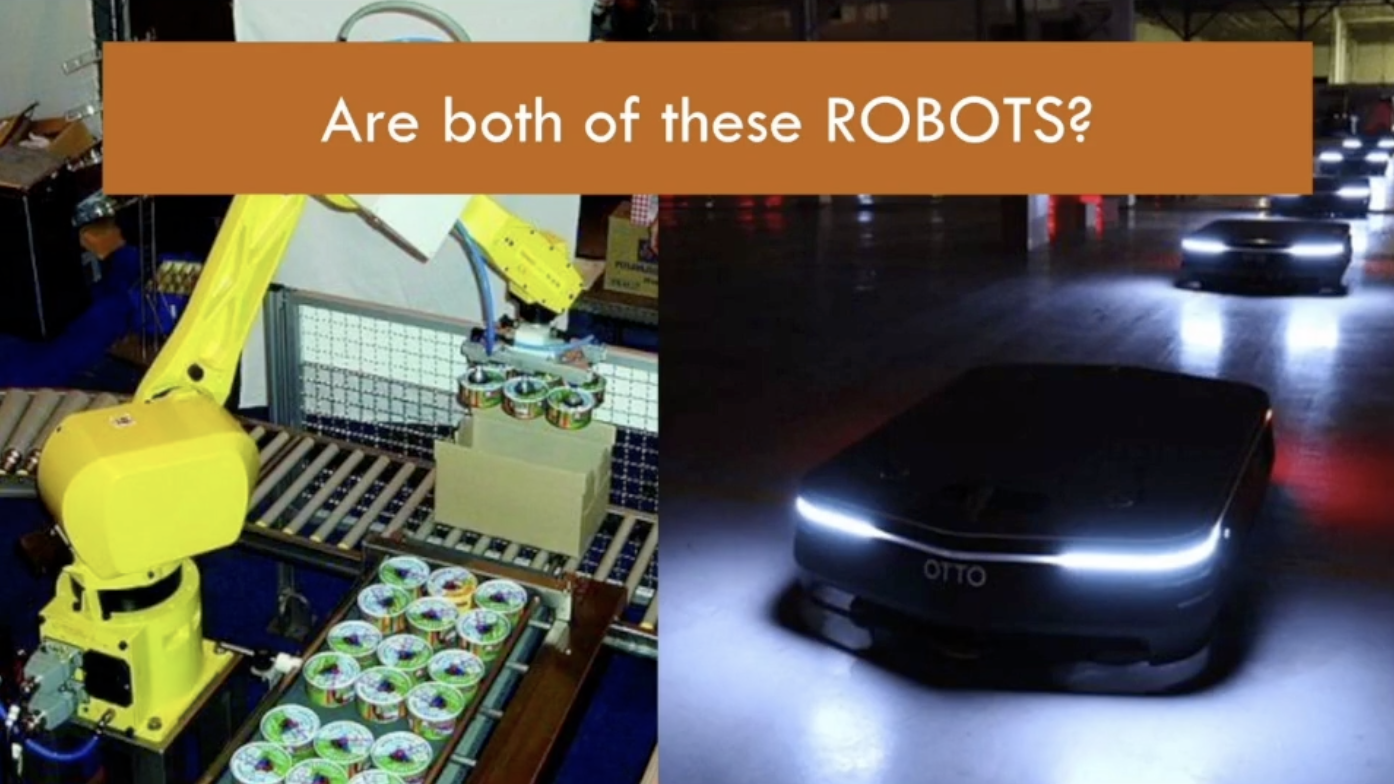
Turns out, that is a very difficult problem to solve, and that thing that they invented is full of mapping and sensors and artificial intelligence and a whole bunch of other cool stuff.
The pitch
They go to sell this thing, they get a meeting with the person in the manufacturing plant who's in charge of buying robots, and they walk in and they say:
“Hello, we're Clearpass Robotics. We're here to sell you our fancy new robot".
What went wrong?
The minute they say robot, people in the manufacturing plant are like "Ah, a robot. We got robots, man, we've been buying robots for decades. We have approved robot vendors, you're not one of them. We know what robots cost, you seem kind of expensive".
The problem is what they've got in their mind is this thing on the left-hand side of the image, they're thinking about a thing that picks up a roll of tape and puts it in a cardboard box.
What do the Clearpass guys do? They go:
"No, no, no, no, no, no, no, you're wrong. No, you don't understand that they're special robots. They're amazing robots, revolutionary new tech robots, robots like you've never seen before".
How to fix it
Eventually, they decide maybe positioning this thing as a robot isn't doing us any favors. They took a step back, and they said, what makes us special, and different, and amazing?
Its mobility, it's artificial intelligence, it’s mapping, its sensors, what drives around and is full of mapping and sensors and artificial intelligence? They realize maybe what we have built is actually a self-driving car. Maybe it's an autonomous vehicle for manufacturing uses, and they repositioned it that way.
Suddenly, everything became so much easier for customers. Of course, it drives around. Of course, it's full of mapping and sensors, and artificial intelligence, of course, it doesn't compete with a stupid thing that picks up a roll of tape and puts it in a box.
What I love about this example too is that it shows how the positioning impacted everything, not just the way they talked about it. If you look at the industrial design of the vehicle itself, it has white headlights on the front, and red brake lights on the back, those do absolutely nothing. They're literally there to drive home this positioning of this thing as an autonomous vehicle.
How do we find our best market position?
Let's define positioning first because it is not a particularly well-understood concept for people. Here's my definition.
Positioning defines how our product is the best in the world at delivering some kind of value that a well-defined set of customers cares a lot about.
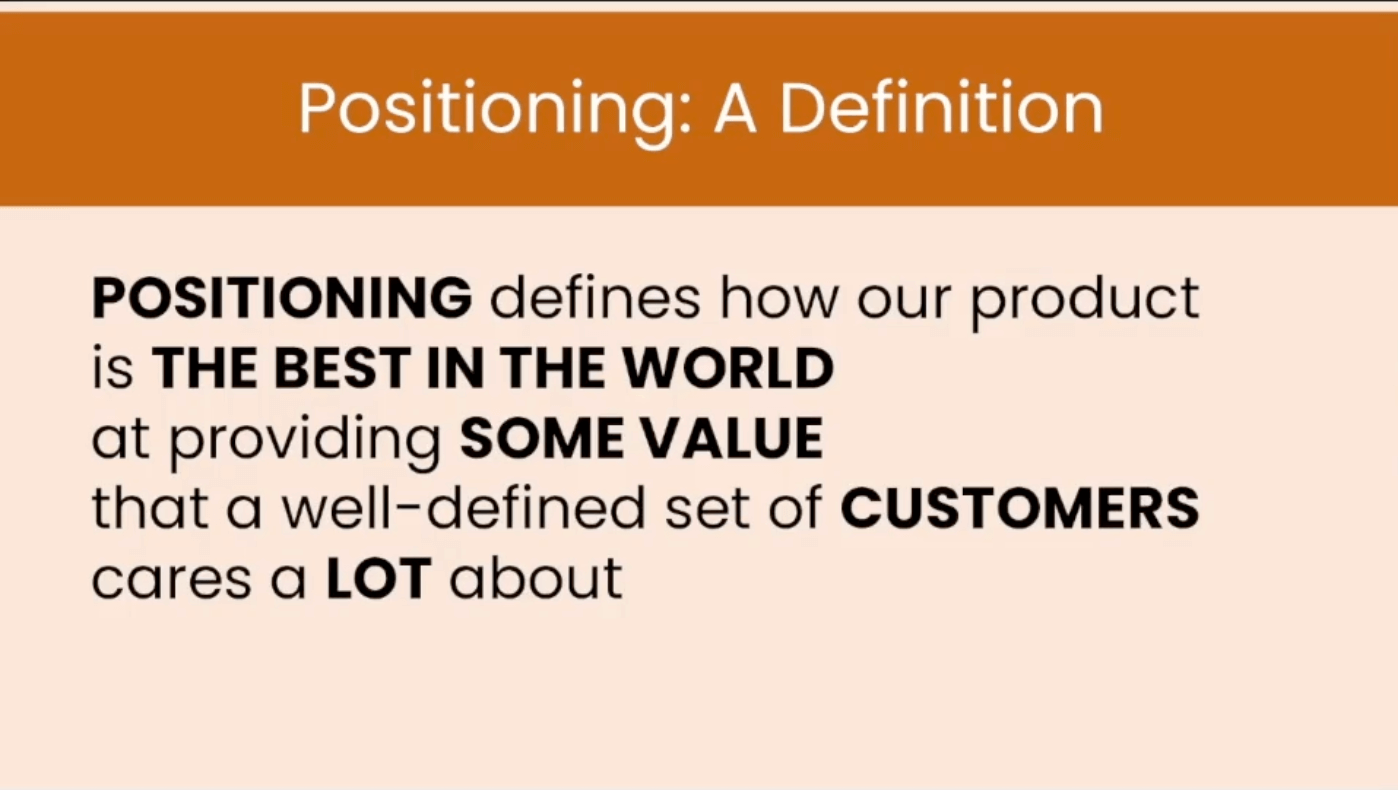
Is that a big mouthful? Yeah, it is actually, the reason it's a big mouthful is that positioning is actually composed of five component pieces.
Components of positioning
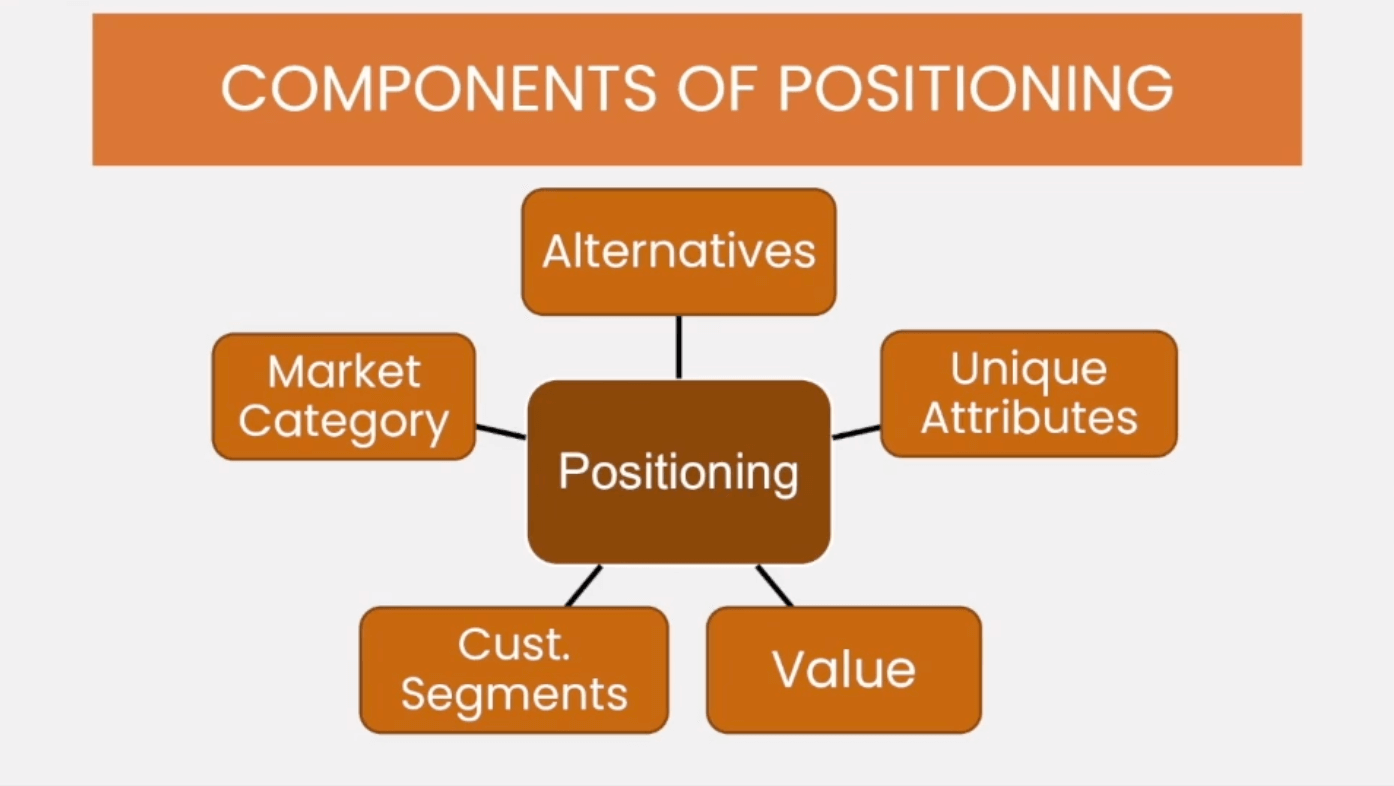
- First of all, positioning defines who exactly are my alternatives? If I didn't exist, what would customers do?
- Secondly, what are my unique attributes or features? What have I got that the alternatives don't have?
- Next, we've got the value. What can I deliver for customers that's valuable to them?
- Next, I've got my target customer segmentation. Who exactly am I selling this thing to?
- Lastly, market category. Am I a robot or a self-driving car? You can think of it this way - market category is the context that you position your product in that makes this value obvious to these folks.
Now, how you actually do positioning is not intuitively obvious. Most companies start out with a kind of default positioning much like my robot example - robot guys who were building robots. But if we really want to nail positioning, we need to do it deliberately and we need to do it using a structured process.
I have one that I've used, it looks like this.
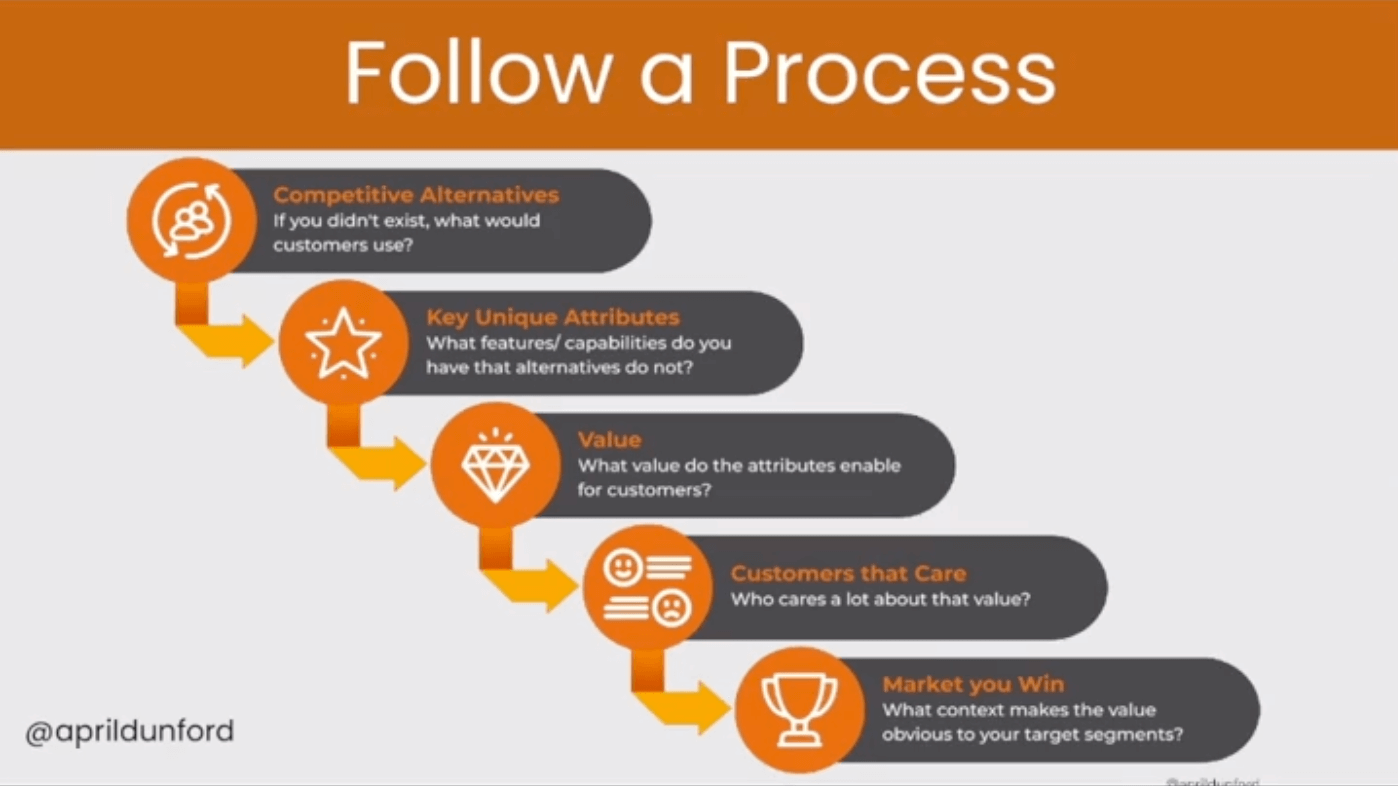
It basically works through the five component pieces in a very specific order. One of the things you notice about the five pieces is that each piece has a relationship to the other, if I pick any individual one, let's pick value, the differentiated value that my product can deliver for customers is completely dependent on my differentiated features. But my features are only differentiated when I compare them to a competitor or an alternative. Those things are all related.
My best-fit customer segment is the people that care a lot about my value. So those things are related. Market category, I can't really figure out my best market category until I understand what's the value that my product delivers and who's it for? Then I can pick.
If you think about it in that way, you have to work through the component pieces in a very specific order. Otherwise, what you get is positioning that sounds kind of good, it just doesn't actually win in the marketplace.
In my opinion, you have to do it this way.
Follow a process
Competitive alternatives
The starting point for this is competitive alternatives. Notice how I didn't say competitors, competitors are different, most of the time in B2B software our biggest competitor is actually Excel, or hiring the intern.
If I'm actually out there busily trying to position myself against the hot new startup down the block, or some other big company in my space but it turns out that actually, my big competition is hiring an intern to do it, your positioning is going to be pretty bad.
The way you've got to do is first you've got to understand if your product didn't exist, what would customers do? That's the starting point. Then you say, "Okay, maybe that's Excel, maybe that's other products. I don't know what it is".
Unique attributes
Pick it and then you're like, "Okay, so now what do I have, that they don't have?" That's how I get unique characteristics.
Value
hen I can take that and say "For each of those features, so what for customers? How does that map the value?" That gets me to differentiated value proposition.
Target customer segmentation
Once I have that, I can say, "What are the characteristics of a target customer that makes them care a lot about my value?" That's how I get the best-fit customers.
Market category
Once I have that, I can say, "Okay, what is the best market to position this product in such that this value is obvious to these folks?"
Now, there are a 1000 ways you can screw this up and if you want to go way, way, way down the rabbit hole on positioning, I wrote a book about positioning, you can go nuts on that. I'm going to get off this topic at this point though, so I can get to the rest of this article.
How do you beat the hordes?
Number one, you position in a fight you can win, you do that using a deliberate positioning methodology.
Teach your prospects how to buy
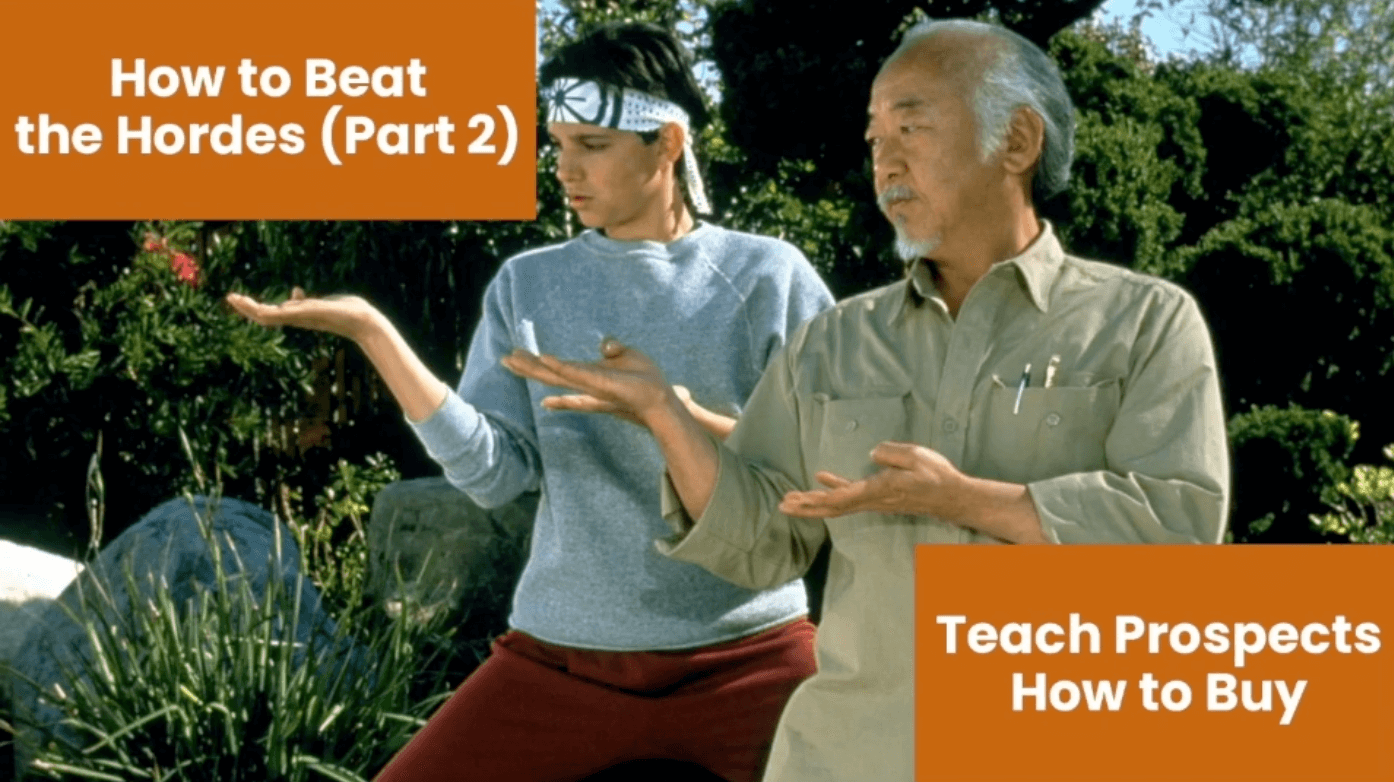
Secondly, related to this, you teach your prospects how to buy which might sound weird at first, but think about it this way, most of us sell a solution that customers have never purchased before.
I used to be in the CRM space where we sold customer relationship management - my buyers, nobody had ever bought a CRM before. Your buyer wakes up, they get the job, someone says, "Hey, find us a new CRM", and they're like, "I don't even know what makes a good CRM. I don't know how to evaluate CRMs".
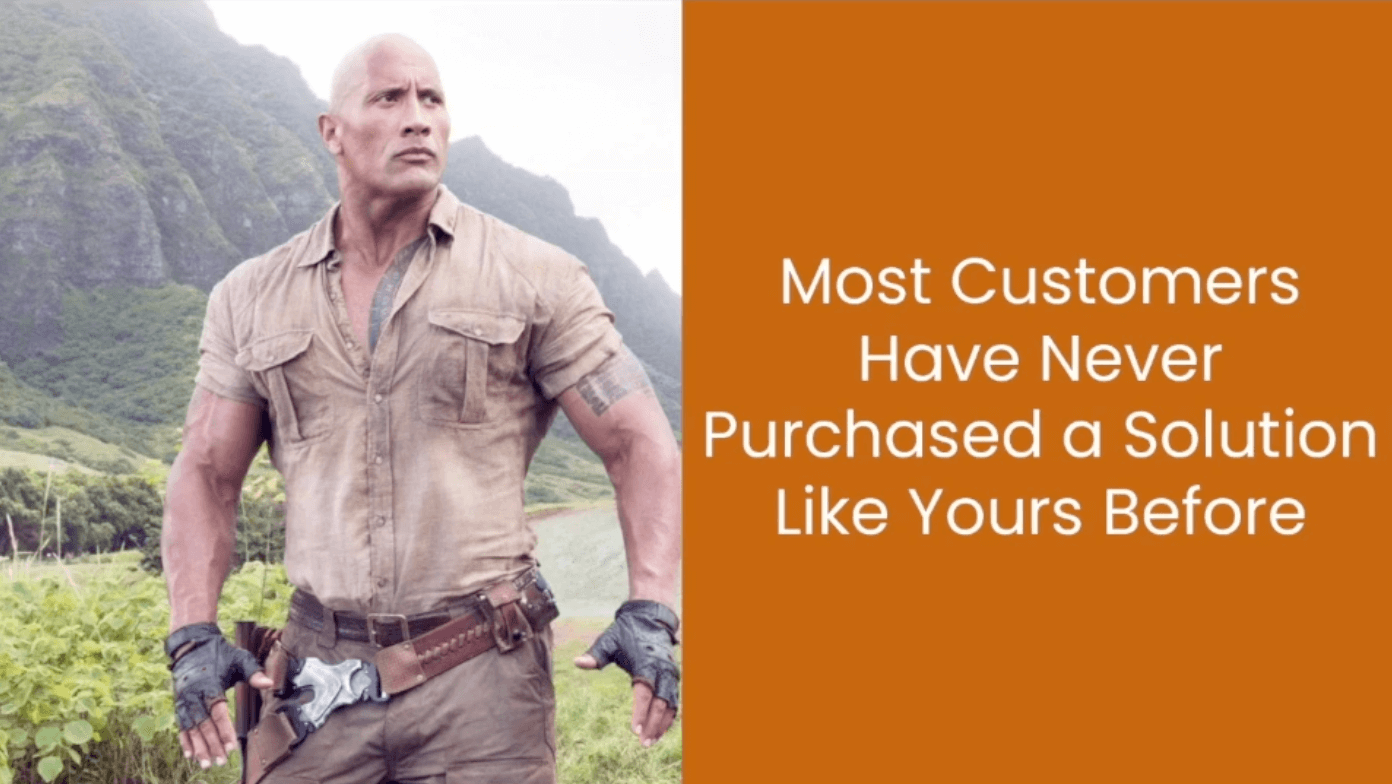
What happens is I Google around the night and I get a slide like this and I'm like, "Aha, terror. There's 7000 things out here. This is not gonna be helpful to me".
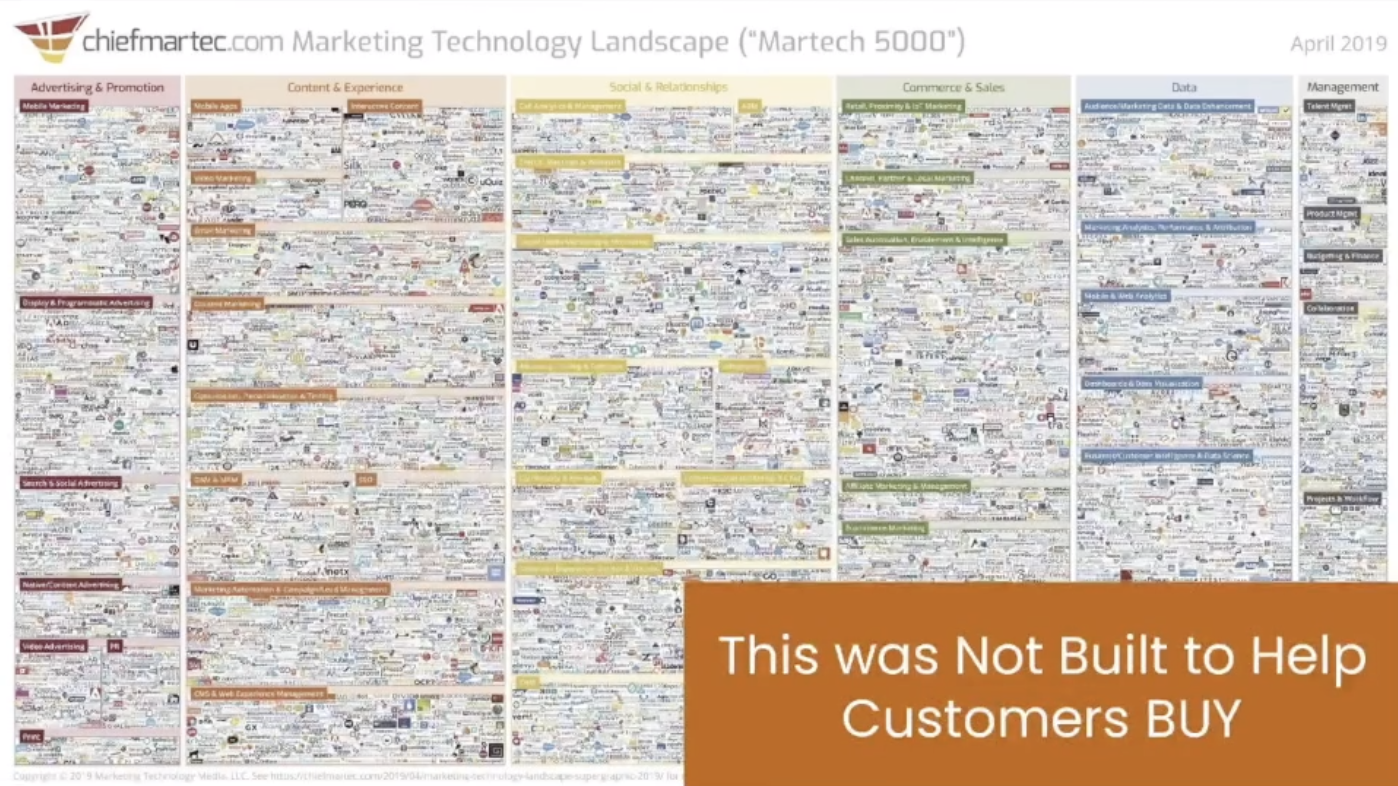
I keep Googling it, let's say what I'm actually looking for is software to help me train my sales reps. I Google around and I figured out "Oh, that's actually called sales enablement software. Great". I narrowed down to the box, that's good, I'm not looking at 9000 things anymore, but it's still bad. Look at it. There are dozens in there.
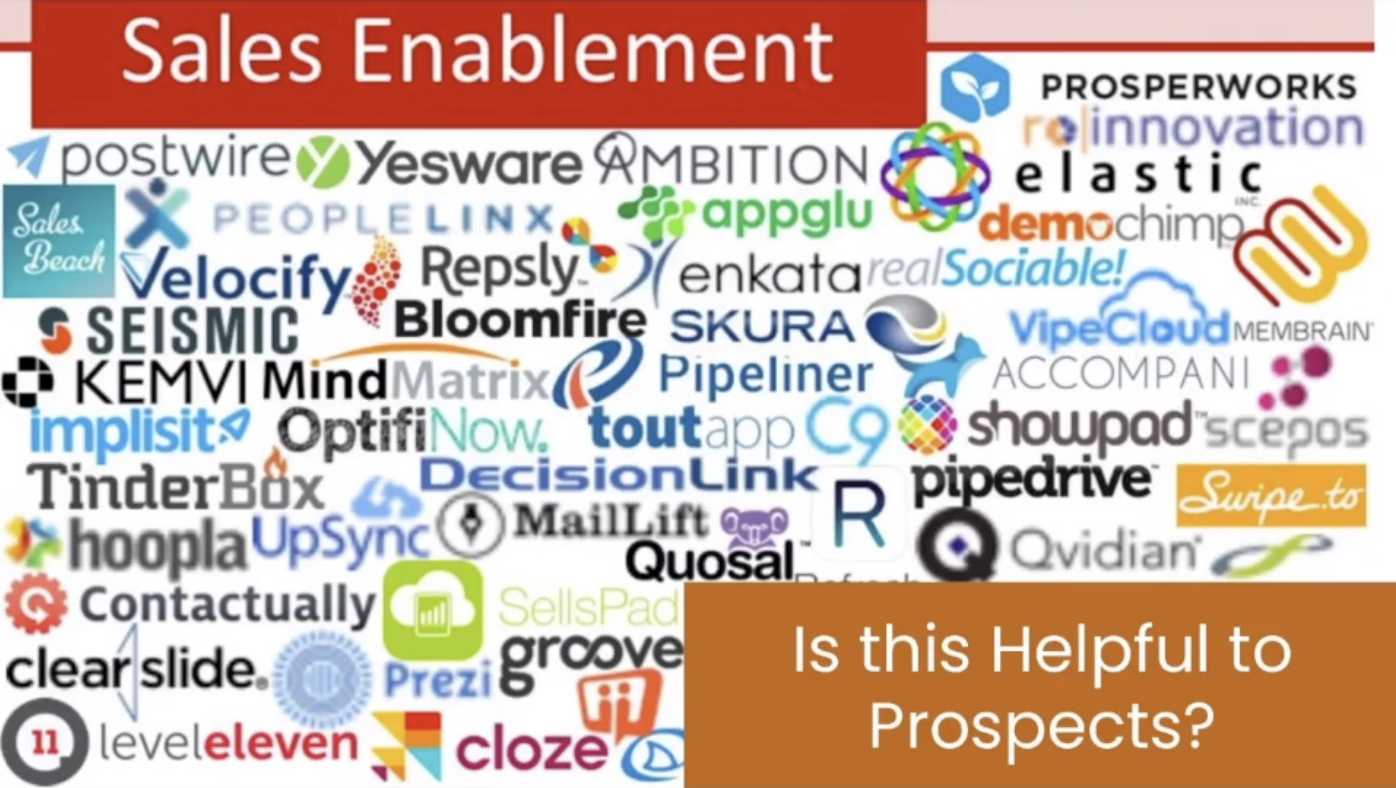
I'm not gonna evaluate every single thing on this chart. Let's say I keep Googling and then I end up with something that looks like this.
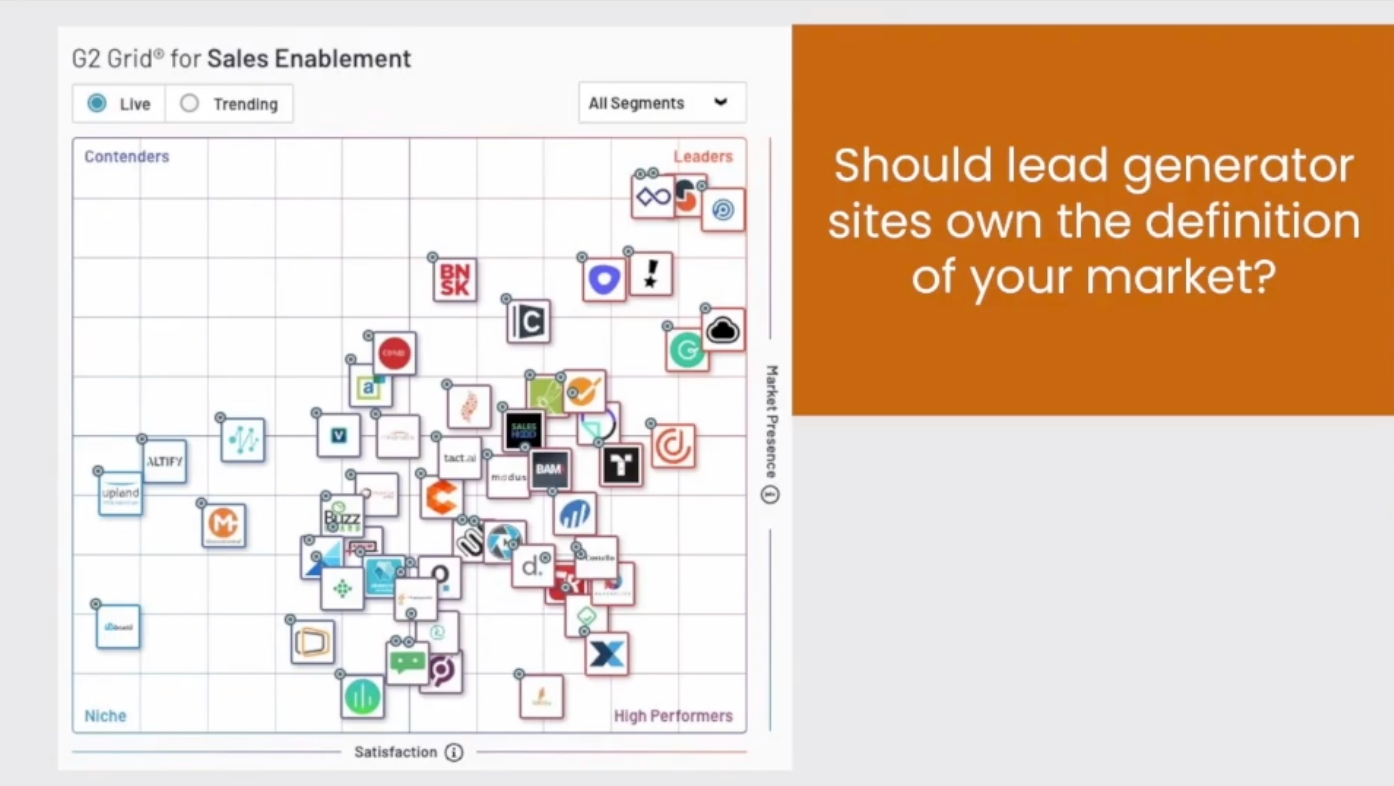
Does this help me buy? Seriously look at it, market presence, performance, whatever that means. Let's say performance is - are my customers happy or not? And this is market presence.
What if I look at all those things in the leader quadrant, there's still a dozen in there, but I'm a small company, and those things look like they're really expensive and for big companies, I don't necessarily want the leader in the market, I want the right thing for me. What do I need to be paying attention to, to pick the right thing for me?
The laugh of these companies is, most of these companies’ business model is they profit from confusing the hell out of customers. That's their business model. They're not incentivized to help customers make a choice. They're incentivized to keep customers in the evaluation phase as long as possible.
They create a new chart every day, they’ve got all kinds of weird categories that don't even exist. They're putting companies in categories where they don't belong. This is not helpful to customers, I don't believe.
Who knows a lot about how customers should make a decision about a product?
You do, vendors do. We do.
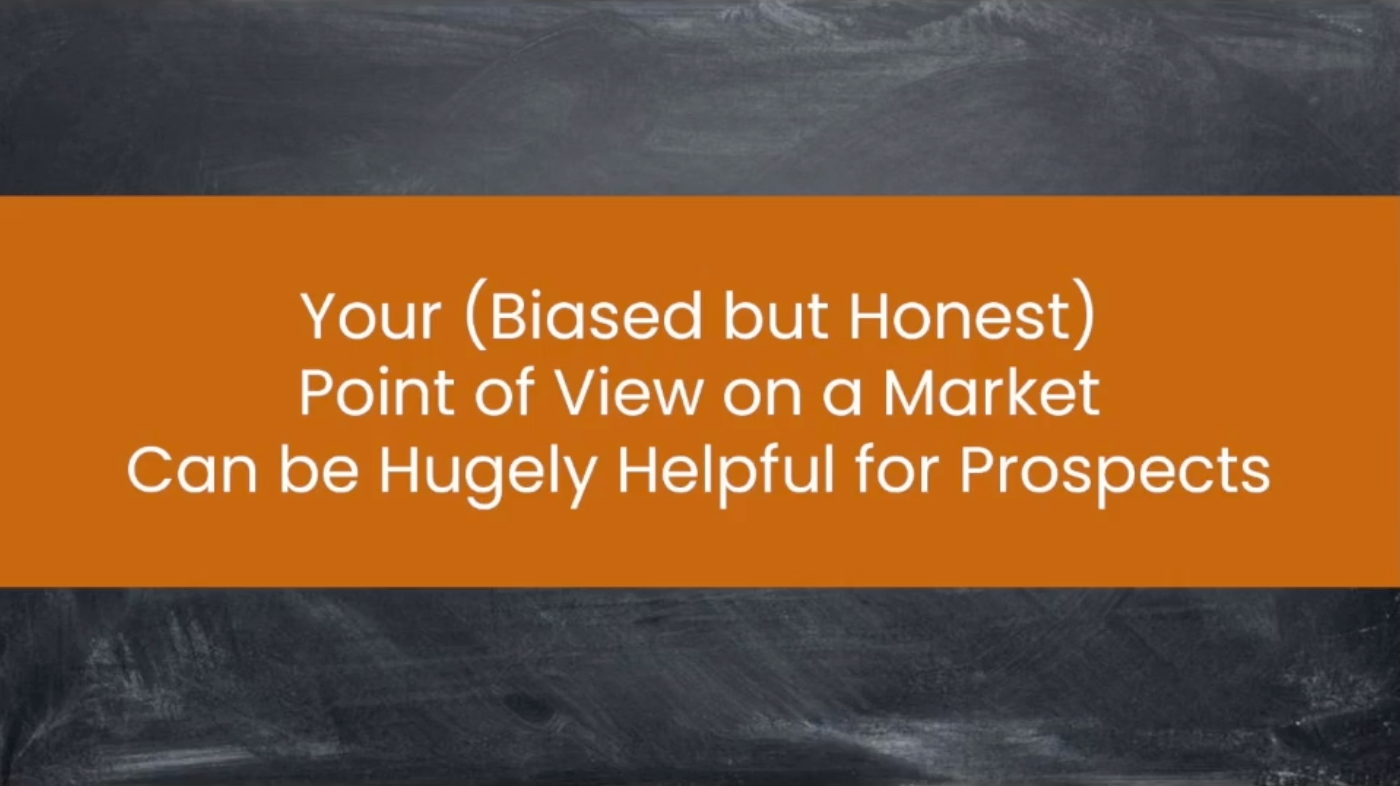
We're sitting there looking at the market all day. Not only that, we have a point of view about what products are a good fit for customers in different situations. We do. It's biased, though.
Most of us don't communicate it because we're like, no customer wants to hear my biassed point of view on what they should buy what they shouldn't, do they? Turns out actually they do. If you look at the research on this, it's fascinating.
The research shows when we ask enterprise buyers what they like the most in a sales experience, the top few things they like are:
- When a sales rep comes in and educates them about their choices in the market.
- When a sales rep comes in and says here's my point of view on what's good and what's bad.
- When a sales rep comes in and says here's how you avoid pitfalls and don't pick the wrong thing.
You're biassed, yes, but if you can keep an honest point of view it can actually be hugely helpful for prospects.
How to be honest to help your prospects
Let's say you're in the sales enablement space, let's say you're a vendor in here and you're like, "Ah, look at all these things. How does a customer ever figure this out?" Here's an example of a company in that space that took this on, it says, "We're going to help customers figure out how to buy this stuff".
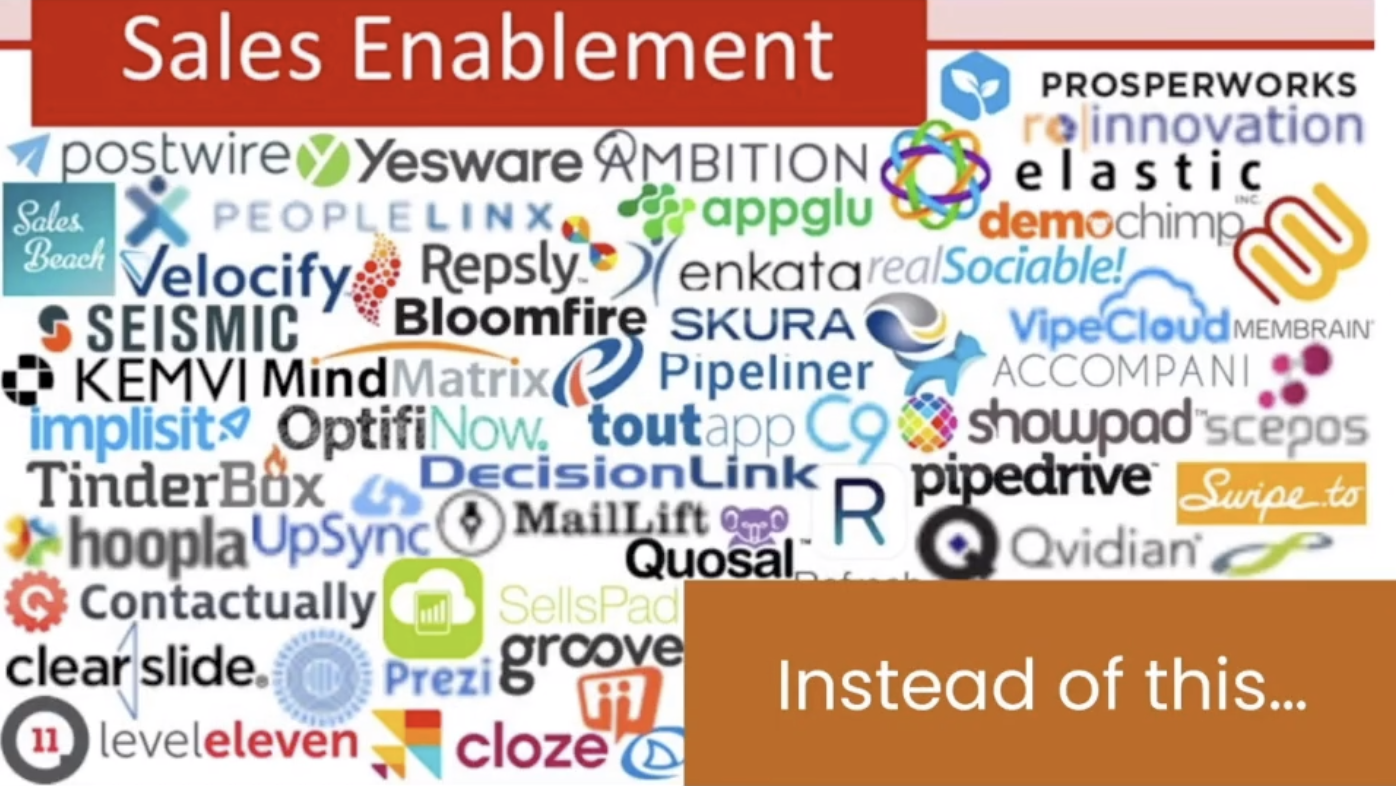
Company X: sales tech explained using donuts
This company is called Level Jump, they’re one customer on the above chart. They did this cheeky piece of content, it was called 'sales tech explained using donuts'.
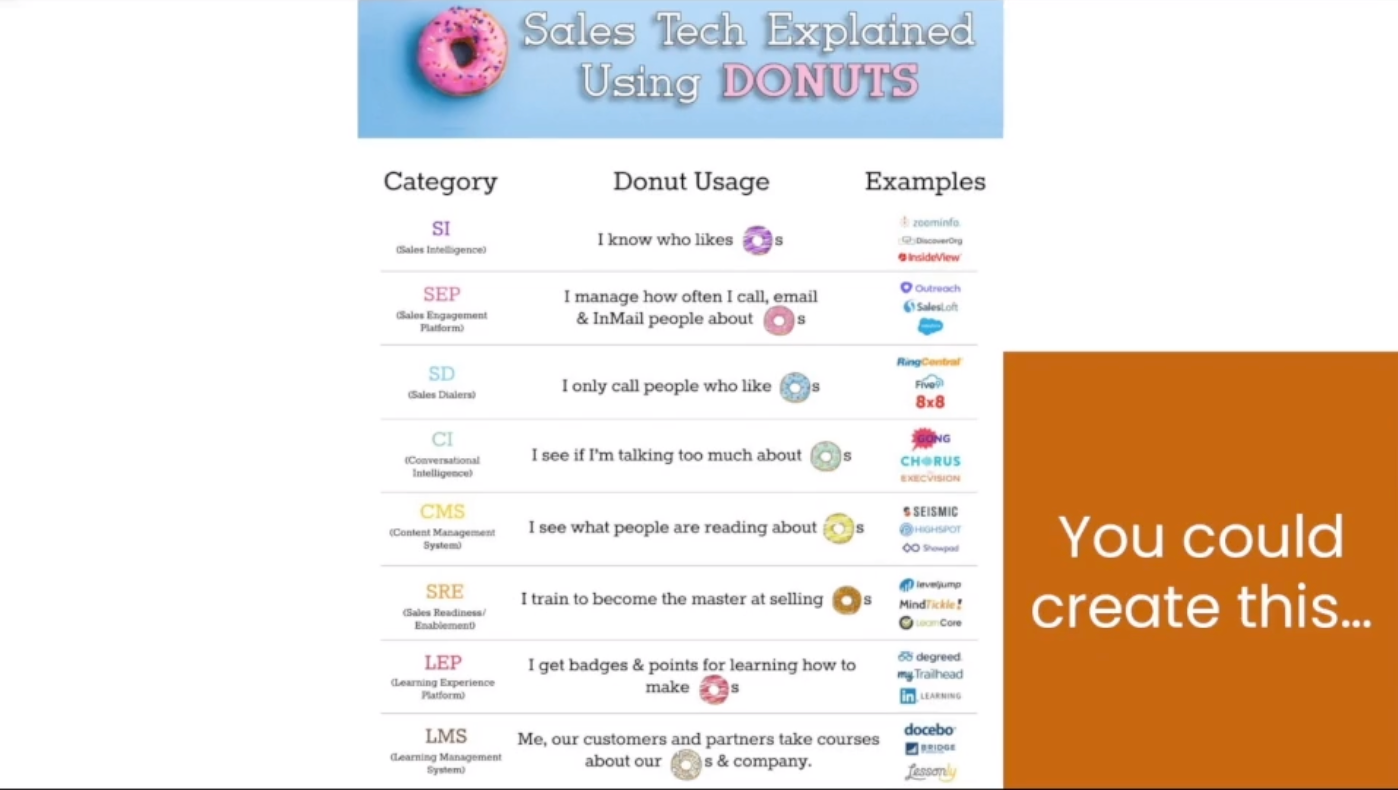
The first one was some of those things you see on that chart are actually sales intelligence. Why would I use sales intelligence? It's when I want to know who likes donuts? Here are the top three players there.
What about sales engagement platforms? That's when I manage how I call email and in-mail people about donuts. Here's who those are.
If you scroll down to where they are they're sales readiness and enablement, ‘I trained to become the master at selling donuts’. Here they are plus their top two competitors.
Now they're not scared of doing this because they know they have clear differentiation with those two competitors. All they want to do is make sure they get on the shortlist, if they get on the shortlist they're feeling pretty good that they can land a good proportion of those deals.
Later on, they got lots of questions in the sales process about how does your software fit in relation to all the other software we have in our sales tech stack. So they created another piece of content that was like a map in a shopping mall and they said:
"Look, you're going to have conversational intelligence and sales engagement. Most of you guys have that already. That's Sales Loft and Gong and whatever. On top of that, you're going to build corporate learning - that's completely separate and it looks like this. That's where Lessonly and Pluralsight all sit, Salesforce has an offering there. On top of that, we've got sales enablement, and that splits into content management solutions and sales readiness, if what you want is sales readiness, that's the yellow stuff and that's where we fit.”
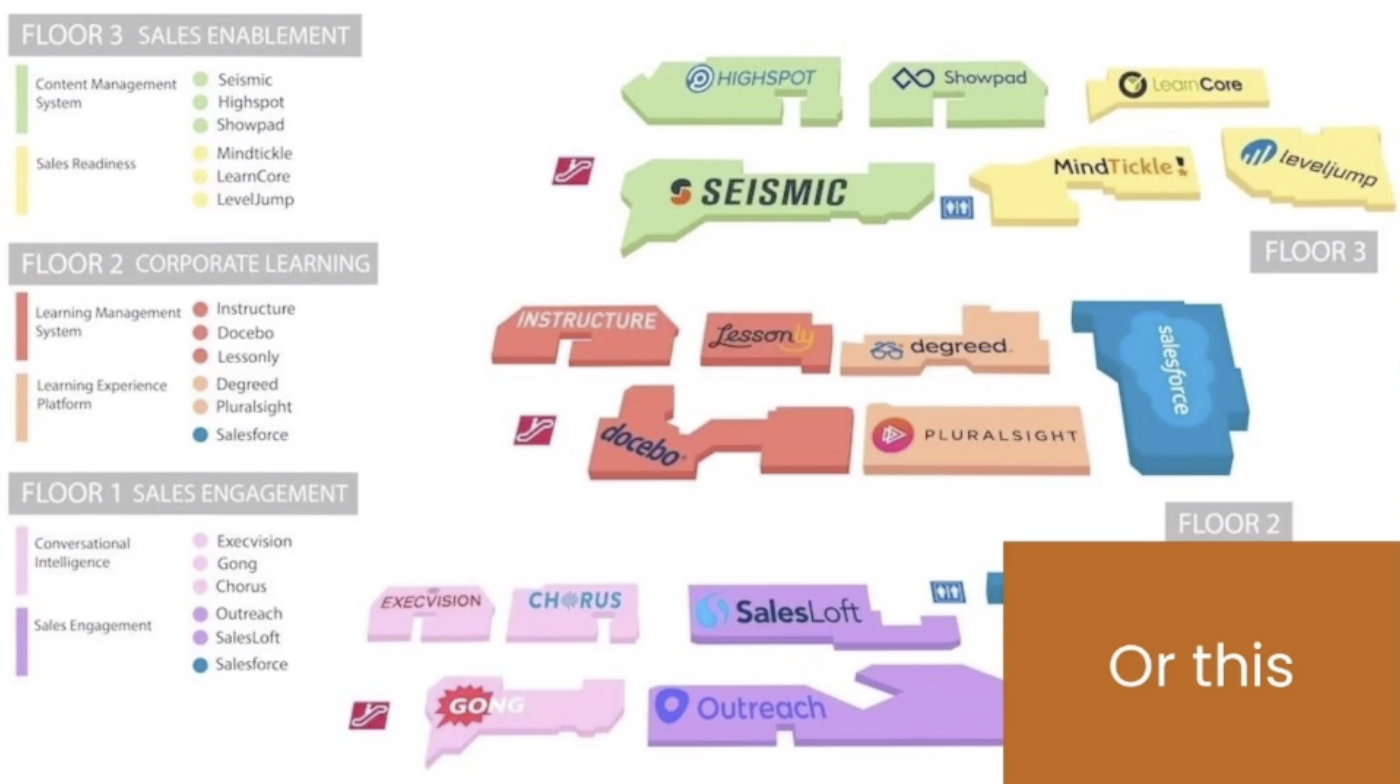
Helpful to customers, popular with customers, content that looks like that.
How do you beat the hordes?
All right, so I figure out how to how to stand out from the hordes and I do that by positioning deliberately and then giving customers a way to think about the market so that I'm actually helping them buy. Now I've got to go and beat the giant.
The giant
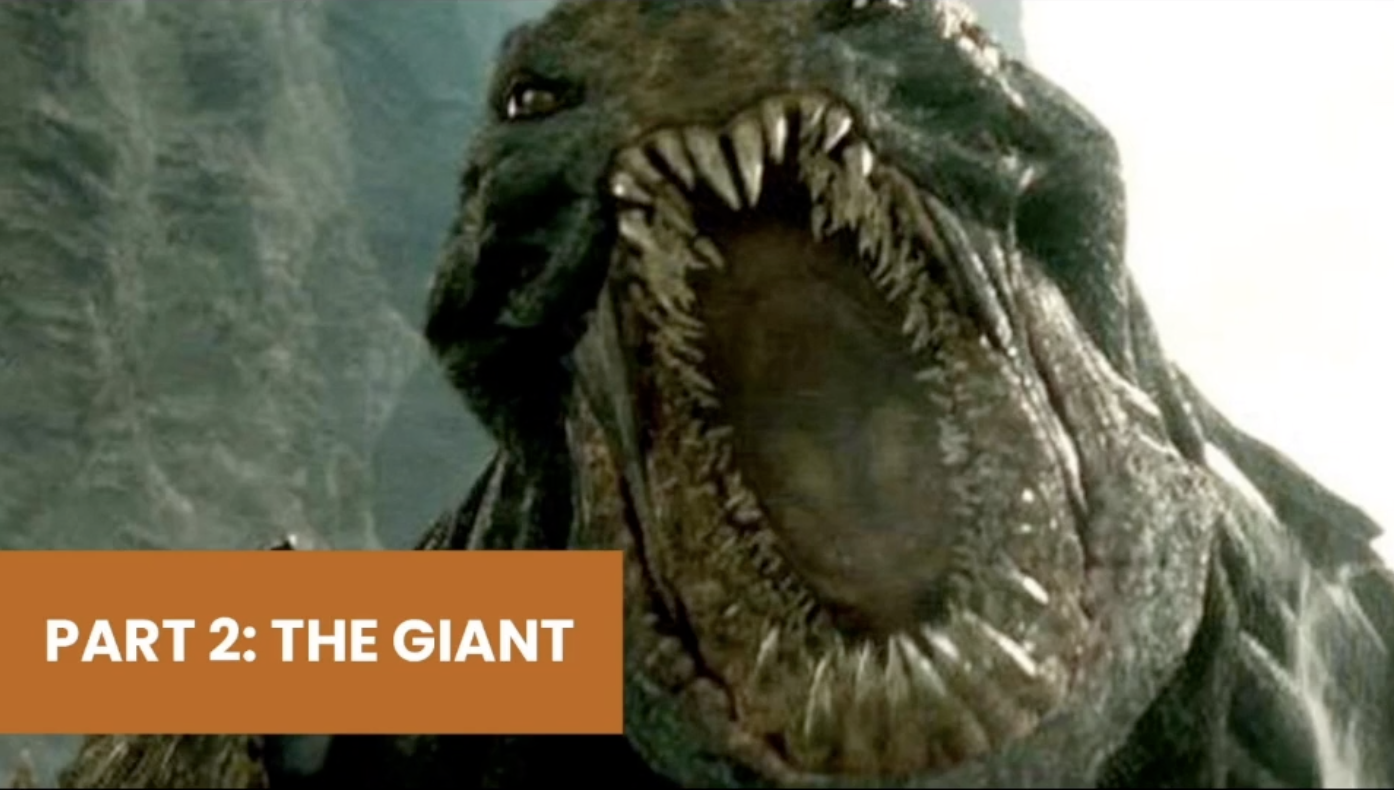
No matter where we are, there's a big guy in the market, a big company that's been around, they look like they're safe, they look like they're amazing. It's often hard to compete against these folks, or at least it looks like it on the outside.
Turning weaknesses into strengths when competing with a giant
But one of the things we have to keep in mind is that we can position other companies in our space in the same way we position ourselves. One of the best ways to position against a big market leader is you essentially use their strengths against them.
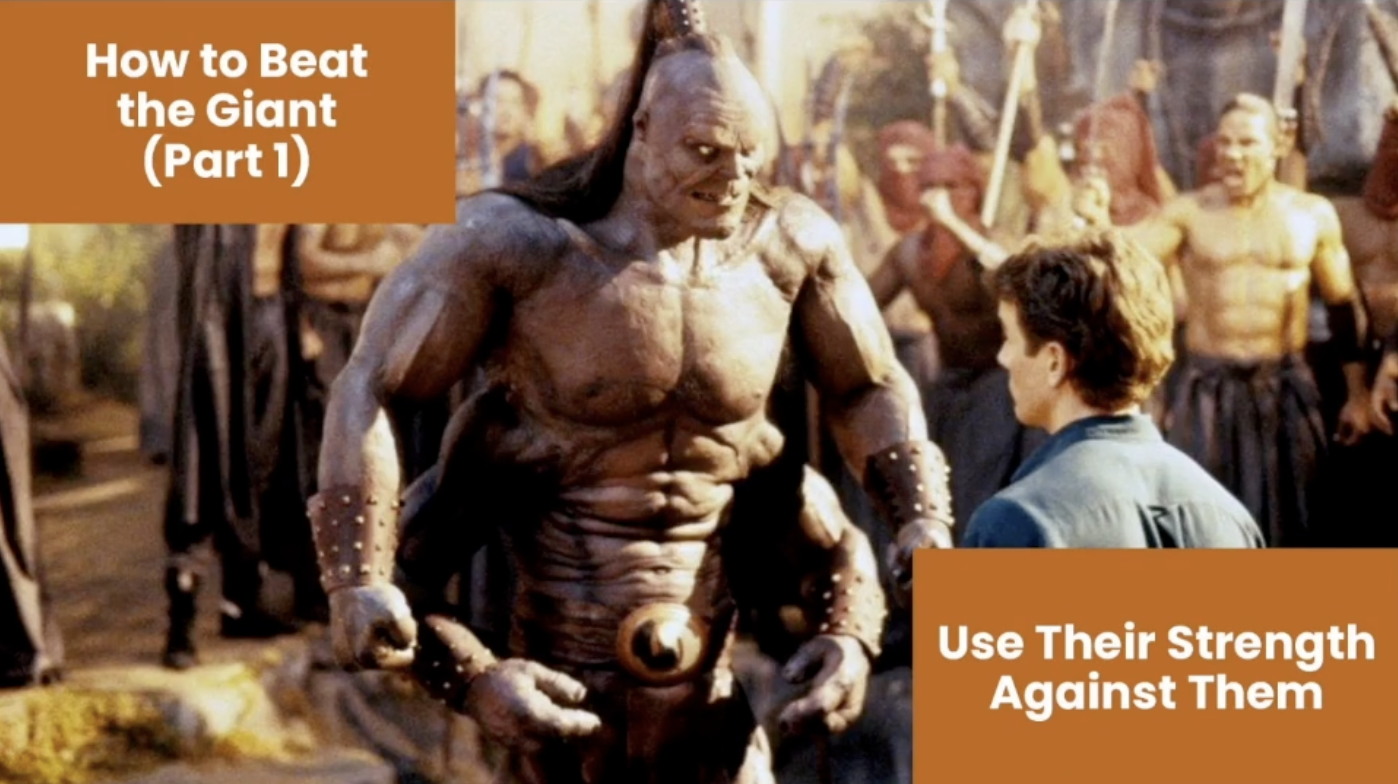
Inside everything that you would normally think of as a real strength or a competitive advantage of a big company is a weakness, an inherent weakness.

When I worked at IBM, we spent a lot of time talking about how we were very proven and our stuff had been in the market for decades and that's why you would want to choose us. Little startups would come in and say, "Ah, legacy shit". They would just toss us on to the legacy pile. Nobody wants to buy legacy software. That sounds bad.
Once I worked at a startup where we did a very specialized thing in a niche of the market, and we positioned deliberately the big player in our market as being 'market-leading but they're generic, they're unspecialized'.
Things like feature-rich at IBM, we very much prided ourselves on the fact that every one of these drop-down menus had 19,000 options you can choose from, we thought that was a good thing. We'd have startups come in and say ‘do you really need all that complexity? Gosh, that looks like it's hard to use’.
Trusted by many can mean slow to innovate. Here's an example of this in the sales tech space.
Example: Canvas vs. D2L
A few years back, I was doing some work with a company called D2L. They're one of the leaders in their space, a very mature product, lots of features, broad depth of functionality. A big company making a lot of revenue.
This little startup came nipping at their heels and they basically had nothing - they didn't have enough features, they didn't have the breadth of product, they didn't have a lot of depth. But they did this really good job of coming in and saying, "Hey, customers do you really need all that functionality?".

They used this imagery, and they said, "We're like a sleek little Volkswagen Beetle, we're just what you need, not too many extra things, it's sleek and easy to use and nice. The other guys are like a big old station wagon with crap hanging off of it all over the place, you don't want that".
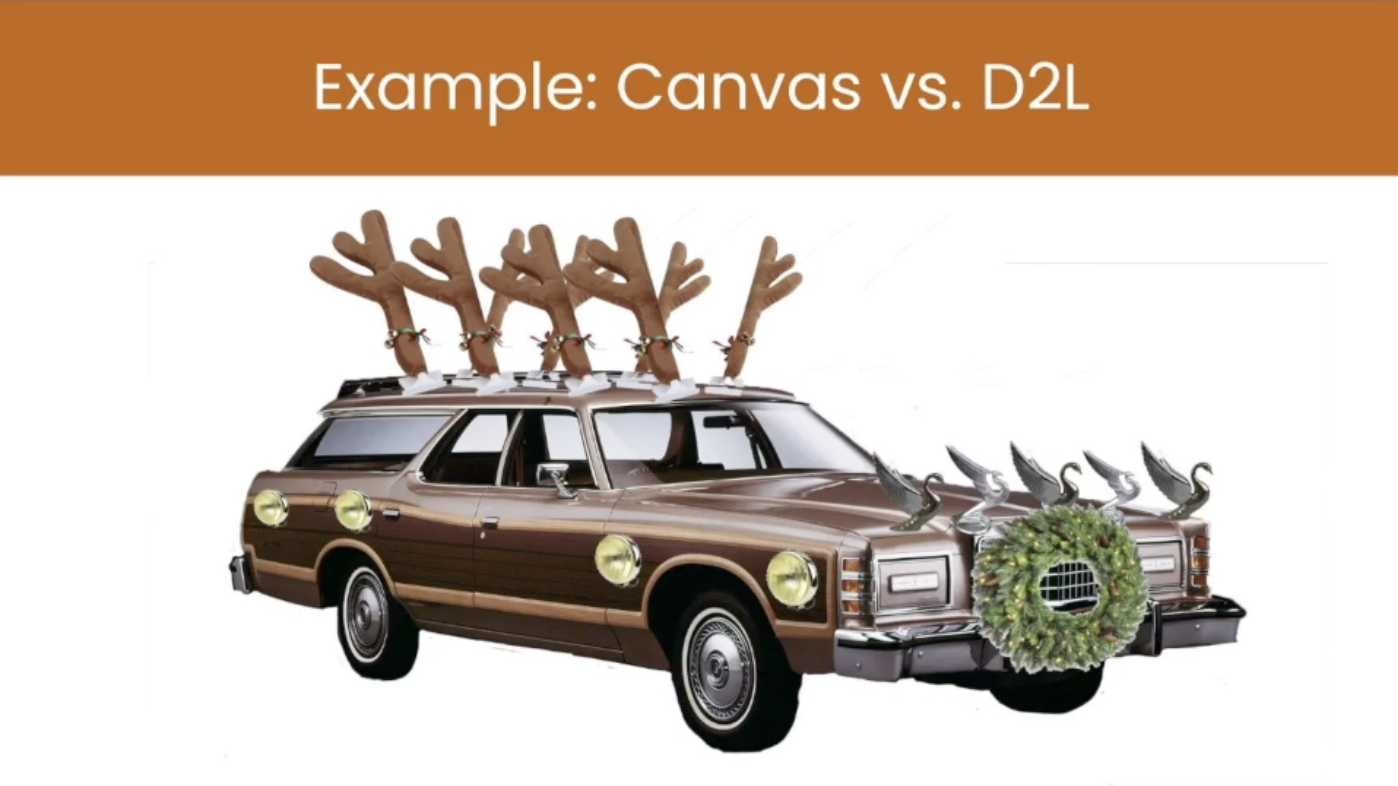
They took the strength and turned it into weakness.
When should product marketers let giants win?
Here's the other way you beat the big guys - you just let them have the part of the market where you can't beat them but you vigorously defend your own turf.
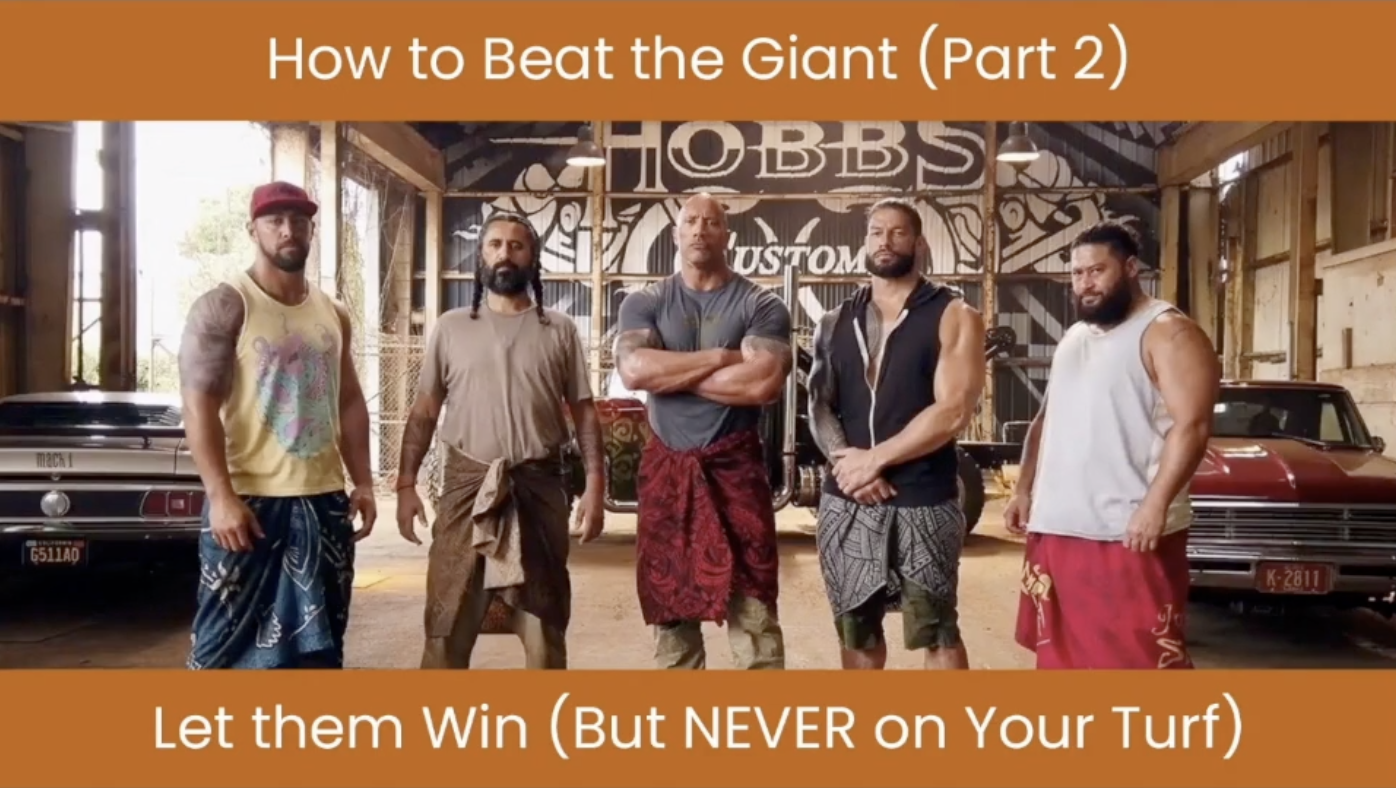
If you're competing with them, you don't necessarily have to beat them everywhere. In fact, you're not going to beat them everywhere. That's why they're big and you're small.
But if you carve out the piece of the market where you absolutely do win, you basically just say we're never ever going to let them win here, but we're going to give them the rest of it. This helps build trust with customers as well because if you're trying to go in there and pretend that you beat them everywhere it's just not credible because it ain't true.
I'll give you an example of this.
Example: Janna vs. Siebel
I worked for a company in the enterprise CRM space, this was years ago when Salesforce was still selling at the very bottom of the market. Enterprise CRM at the time was this giant company called Siebel, which was huge, 2 billion revenue, 9000 employees - big, big, big, hundreds of customers, the undisputed leader in enterprise CRM.
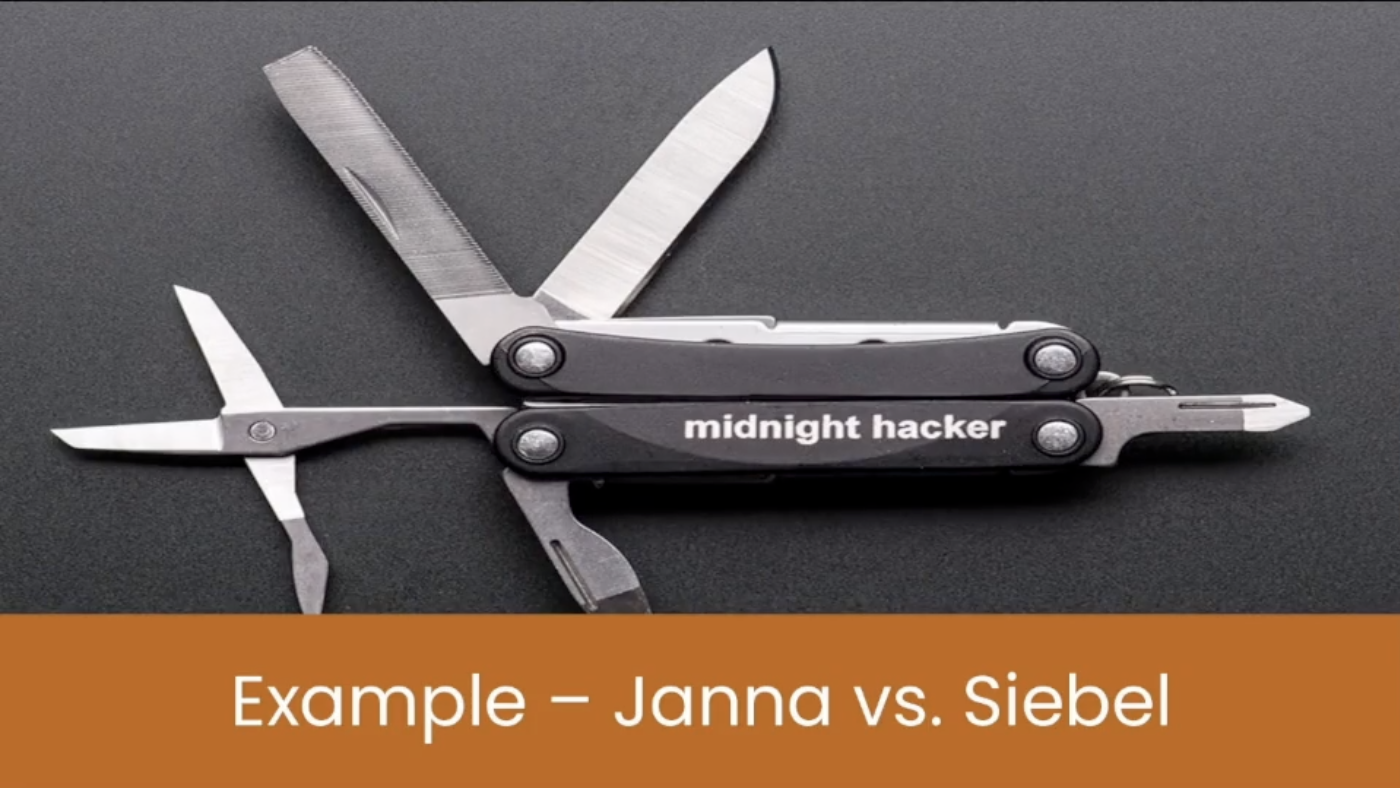
We were playing in a niche market where we were just for investment bankers. When we went in to talk to investment bankers about what we did, the first question they'd ask us is "Do you guys compete with Siebel?" and we'd say:
"Oh, Siebel, we love them. They're amazing. What a company. So big, so smart, so much revenue. Oh my gosh, they're amazing. They're like the world's greatest general-purpose CRM for call centers in India and manufacturing plants and retail and stuff, but not you, Wolf of Wallstreet.
What you need is something very specialized your sales process doesn't look general purpose does it? It's very special. We have a very special set of features that you need that the other guys don't have. Buy them for everything else. Don't buy them for investment banking".
We made a lot of money doing that.
The ghost
You've made it past the hordes. You've beat up the big one in your space. Now onto the ghost, which is the status quo. In a lot of ways, the status quo is kind of the worst competitor, the data on this is actually terrifying.

The accepted data says that we lose about 20% of deals to the status quo. When I say lose, I mean, you got on a shortlist, you went all the way through a sales process, you got right down to make the decision, and the company said, 'we're just gonna keep doing what we're doing right now'. That's terrifying.
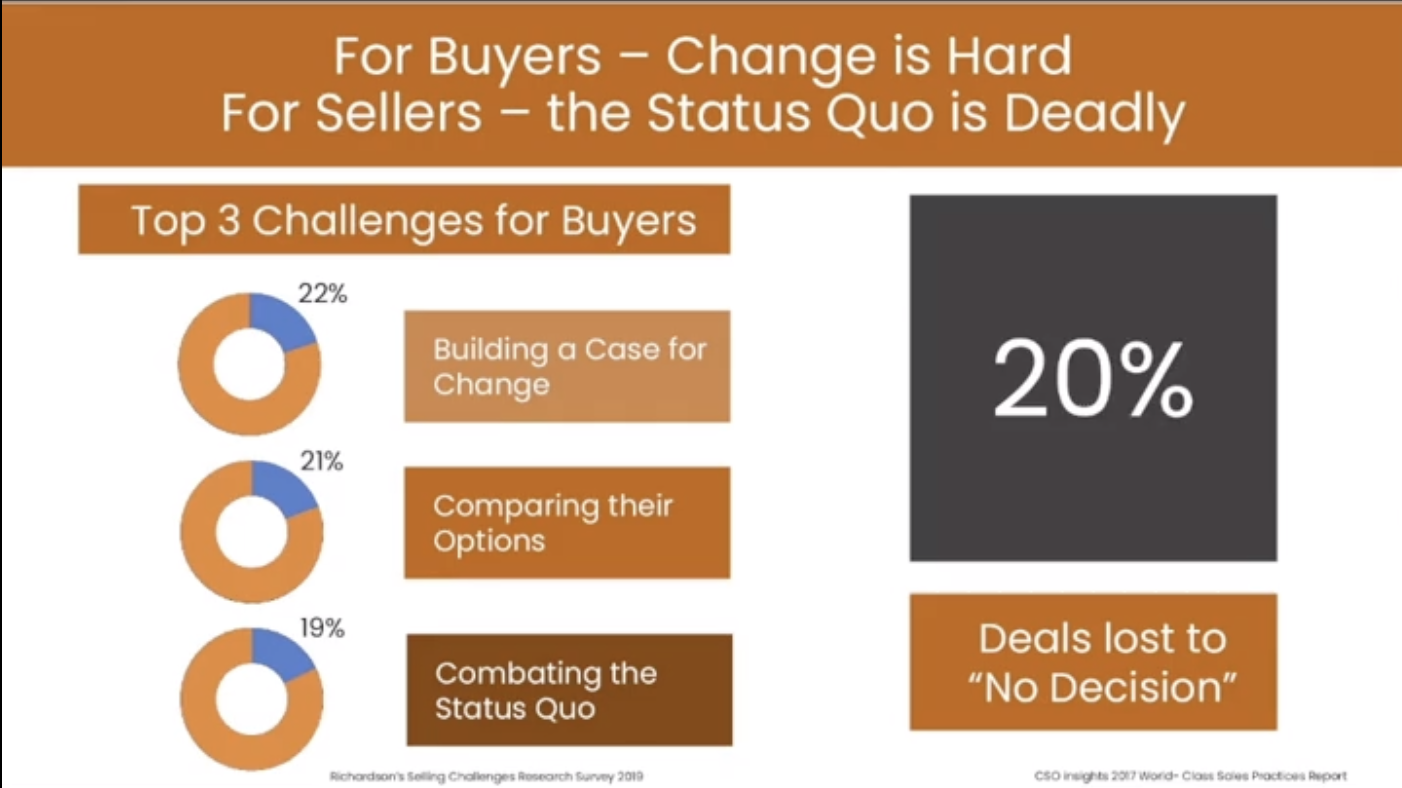
There's this really interesting set of data that I pulled out where they went and did a long study of enterprise sales reps and asked them, what do you think customers are struggling with the most? Their top three challenges for buyers ranked like this.
- Number one was building a case for change, meaning why should we do anything different than what we're doing now?
- Number two was comparing their options, which is what we've just been talking about. They need a way to think about the market.
- Number three was combating the status quo. Again, it's just like number one, how do we actually convince folks to do something different? How do we beat the ghost?
In my opinion, we beat the ghost by aligning with whatever the customer's big priorities are right now.
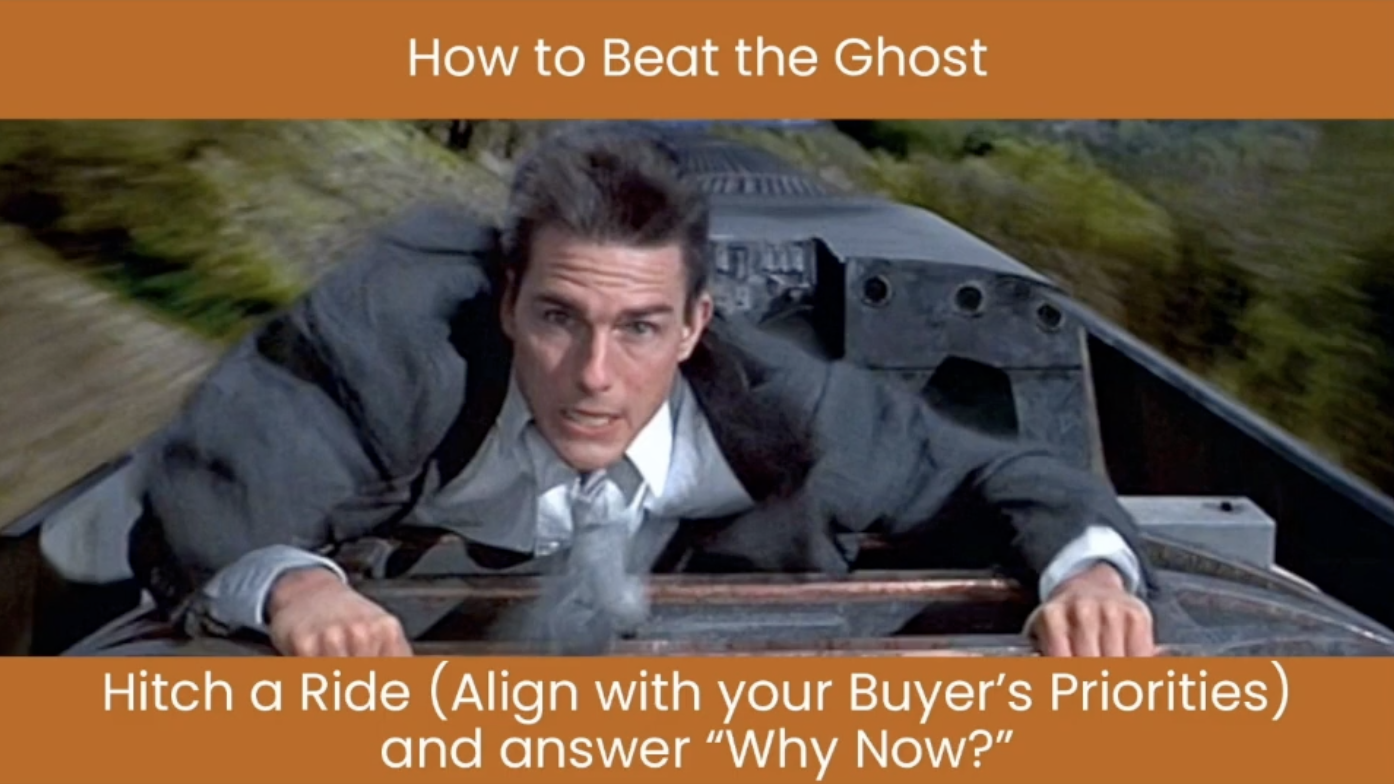
How aligning customer priorities helps you beat the ghost
Often, we have a product or our offering is compelling, it just doesn't happen to be on my top three list of things that I'm going to focus on right now and invest in right now.
When that happens, what we'll often get is, 'let's just think about this next year, maybe we'll make the purchase next year, we're not going to do it right now. It's just not a priority right now'.
Your challenge in this is, how do you draw a line between those top one or two priorities and make your stuff integral to that? I can give you two examples of this.
Example #1: Sampler
One is a company called Sampler, I sit on the board. Sampler sells digital product sampling. Right now consumer packaged goods brands spend billions of dollars doing product sampling campaigns.
So I'm coming out with a new cereal or snack or something and you'll see these people standing on the street corner, at least you did pre-Corona, handing out samples of granola bars or chips, you see them in the grocery stores giving out samples of food to people in the aisles.
What Sampler does is give you a digital way of doing this. They actually have a giant database of folks that want samples, they match them to people that are giving samples away, and then they deliver the samples to people in the mail, collect all this data and you can survey them afterward and find out:
- Did they like the sample?
- Did they not?
- Did they actually go and make a purchase?
- Or did they not?
A lot of this data you can't get with traditional sampling programs.
Sampler's going along, they're doing good, they're growing pretty fast. They're a nifty little startup, and then Corona hits. When we first went into lockdown, consumer packaged goods brands froze completely. They were like:
"Oh, my God, sampling, it's dead. We actually can't sample anymore. We're not gonna stand on a street corner and hand out samples of things. We literally can't be in grocery stores anymore. So we have to stop sampling completely".
Sampler looked at this and said, we actually have the solution for this. They essentially developed a point of view around contactless product sampling. They were in the market, interviewing with press outlets and creating content, out there talking about contactless product sampling and 'the future of the beauty-tester, say goodbye to sampling lipstick in the drugstore, we're never going back to do that again'.
And 'how do we actually do product sampling now that we can't physically stand in the places where people buy and distribute the samples?' They had a perfect solution for that. They're out there talking about that, all of a sudden the thing that they were doing before which was maybe a priority, maybe not that much, became a super high priority.
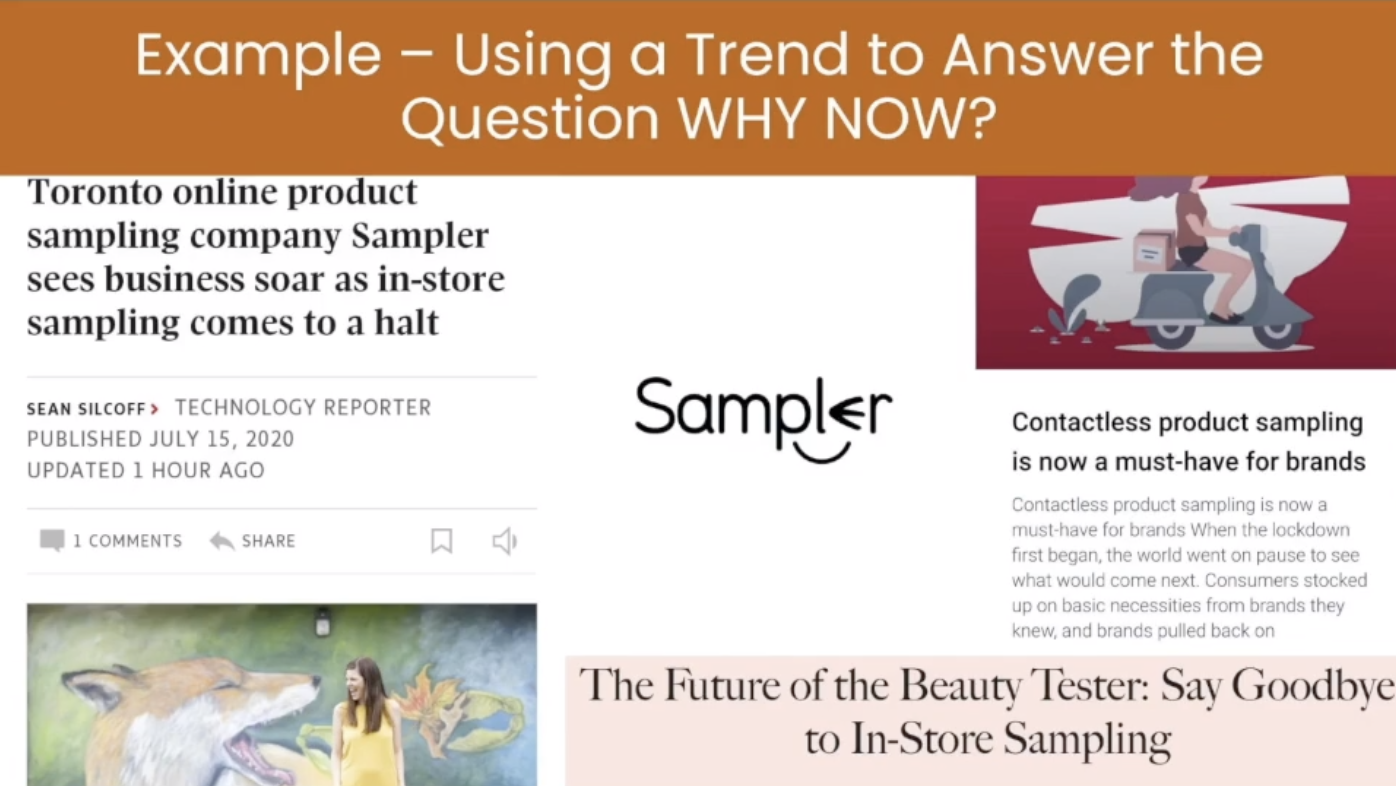
The Sampler stuff just completely took off. They managed to actually raise a big round of financing right in the early days of the pandemic, which is kind of amazing when nothing was happening.
Example #2: Redgate Software
Here's another example of that. This is a company I worked with a while back they're in Cambridge in the UK. What they do is database tools; database backup, database provisioning. It's not sexy, but they do a darn fine business doing it.
They have 800,000 active customers, a great big team, wildly profitable. What happened with them was a few years back when GDPR was first coming up, they noticed that some of their customers when they were trying to sell, would say:
"You know what, this just isn't a priority right now. Next year we'll look at database tools. But right now, we're all focused on a DevOps transformation".
Sometimes folks started doing this in response to GDPR. They looked at that and said, "Well, DevOps transformation should include database tools, why does it not?" Much like Sampler they took a step back and developed a point of view around how databases and data fit into a DevOps transformation and they put a name on it, which is database DevOps.
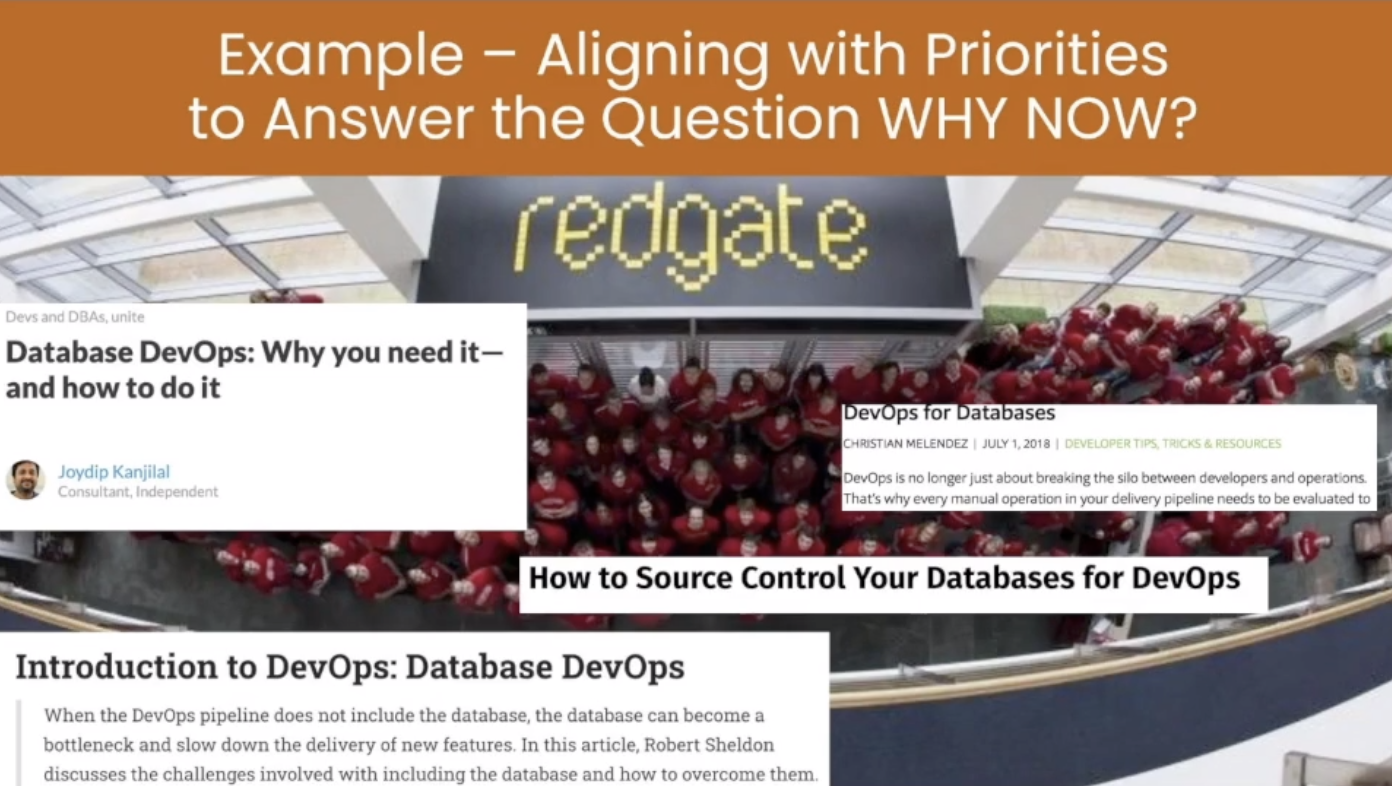
The same thing, they're in the press, they're at conferences, they're writing content talking about DevOps for database, how to source control your databases for DevOps, why do you need it, how do you do it.
The result of that was a 100% increase in inbound leads - the thing that before seemed kind of sleepy, all of a sudden seemed hot because they were aligned with something that was a key priority for their buyers.
Recap
How you beat the hordes? You got to position deliberately using a deliberate positioning process.
How do you beat the giant? You can do that by turning their strengths into weaknesses.
How do you beat the ghost or status quo? You make sure that the thing that you're doing is aligned with the key priorities of your buyers.
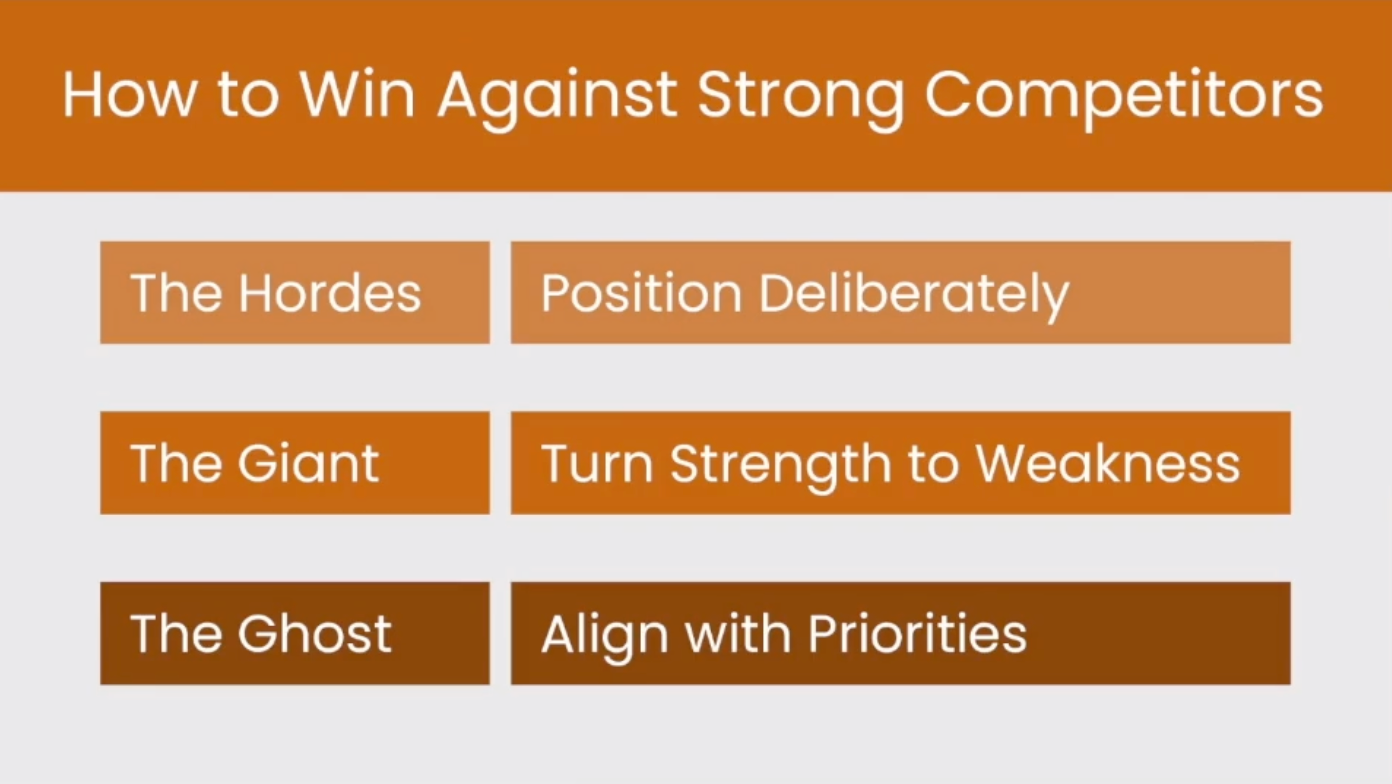
Thank you.
Want to learn more?
Our Positioning Certified: Masters course uncovers the essentials of product positioning, a strategic exercise used to find a product or service’s place in the market.
By the end of this course, you’ll:
- Understand why positioning is so important,
- Learn the ins and outs of strategic positioning,
- Know how to position for growth,
- Appreciate the role of teamwork when positioning your product, and
- Understand the correlation between positioning and cross-functional areas.


















 Follow us on LinkedIn
Follow us on LinkedIn




.svg)
Start the conversation
Become a member of Product Marketing Alliance to start commenting.
Sign up now